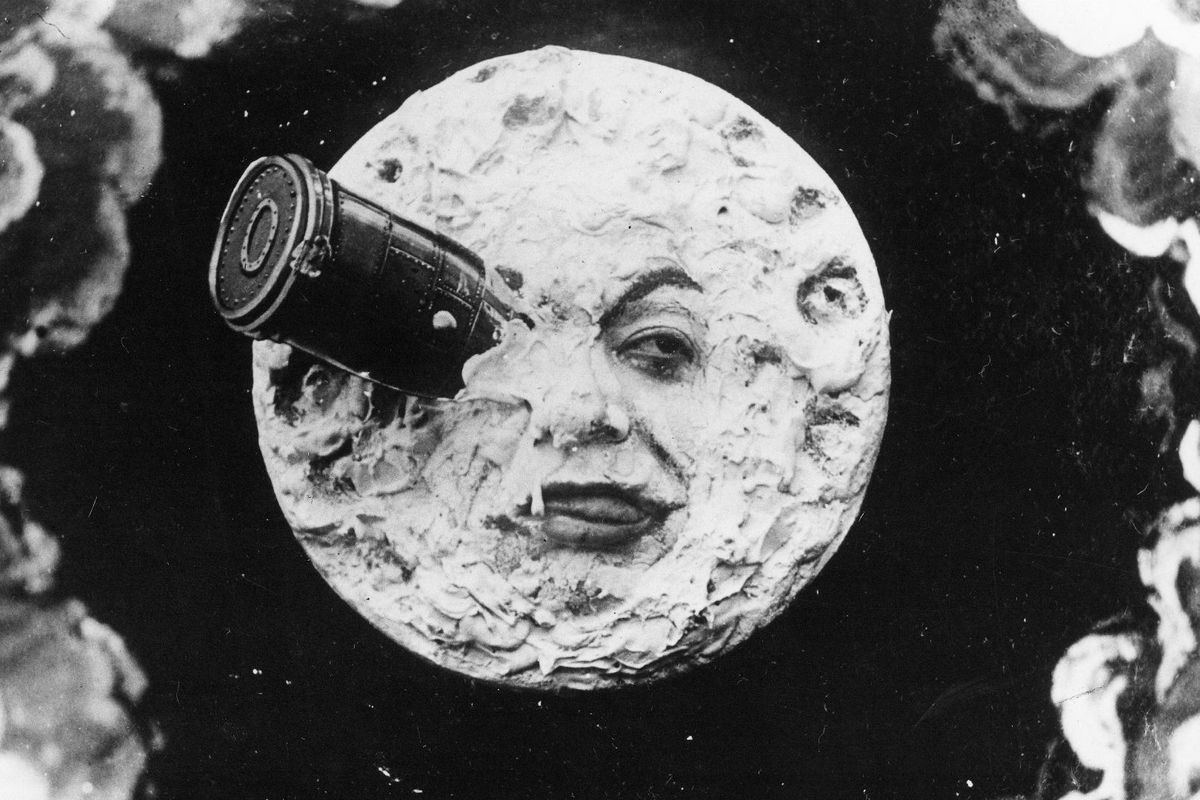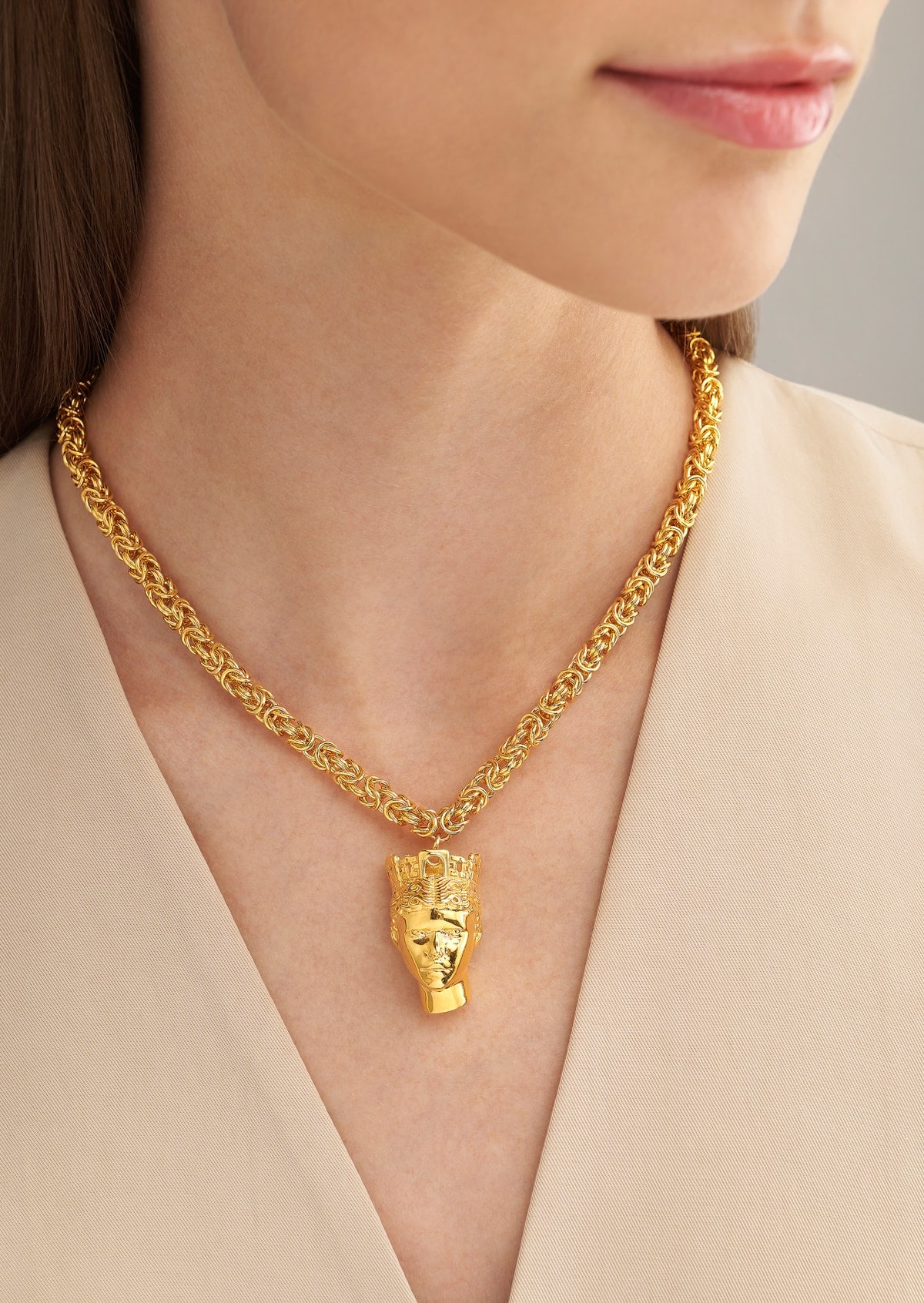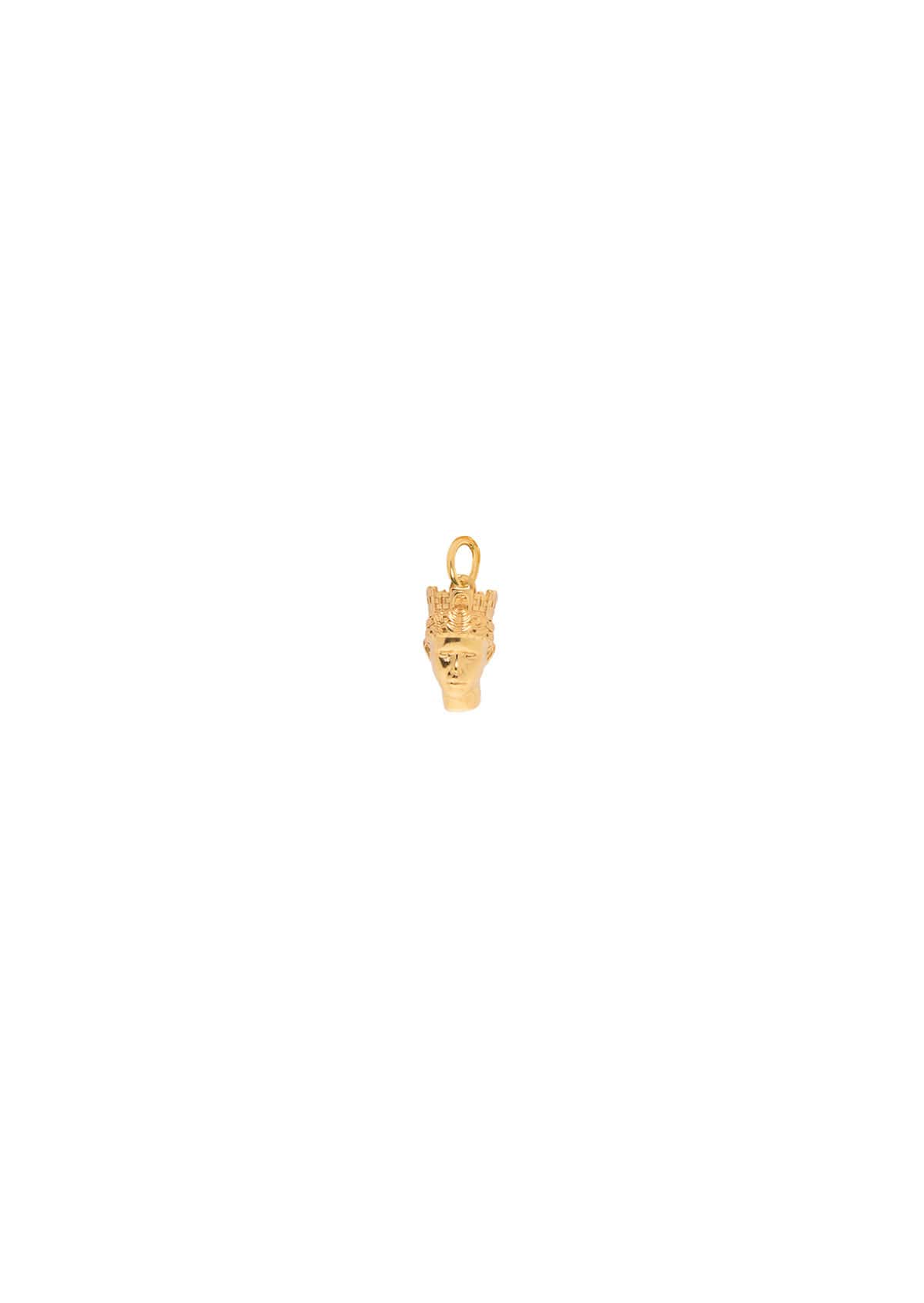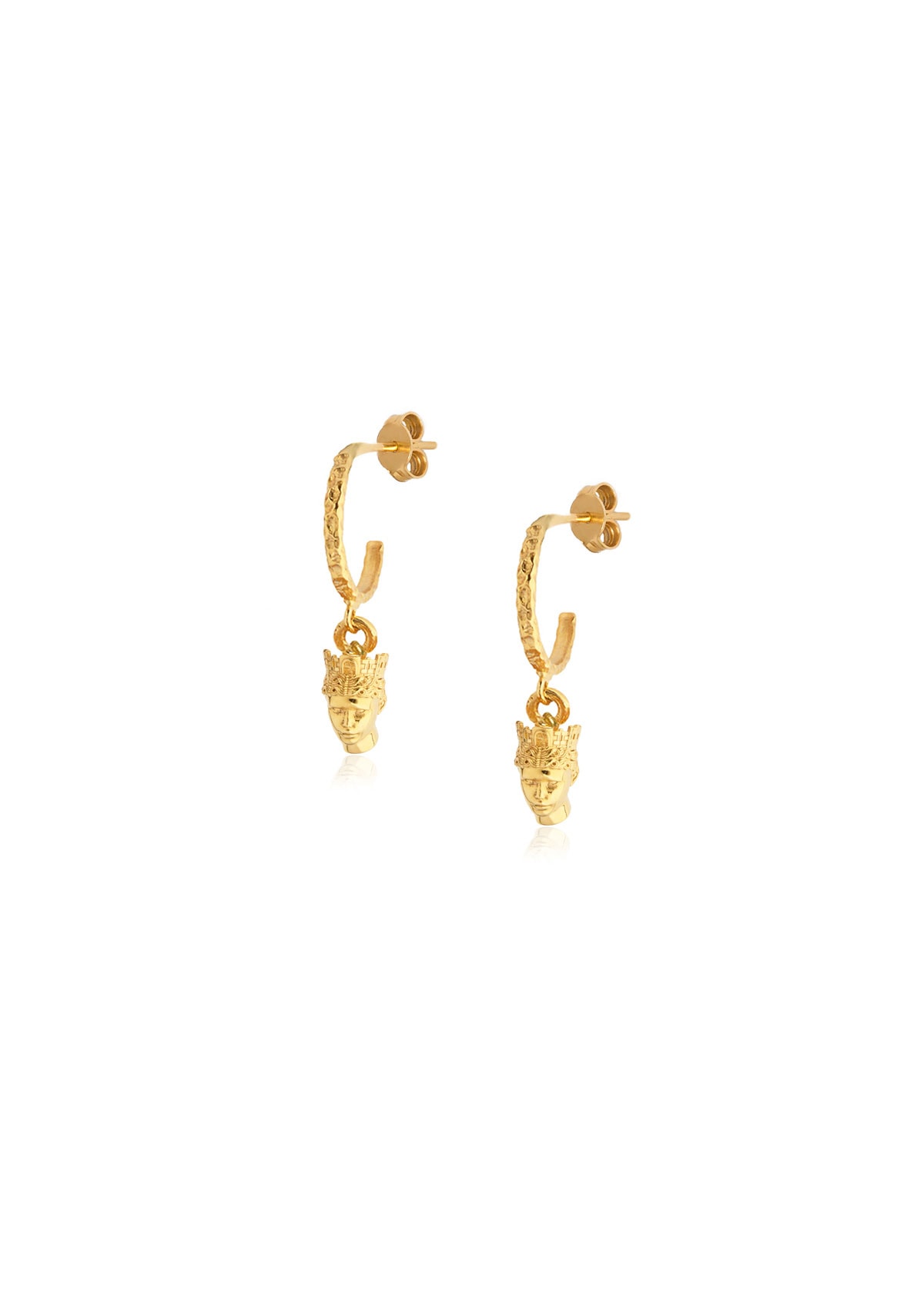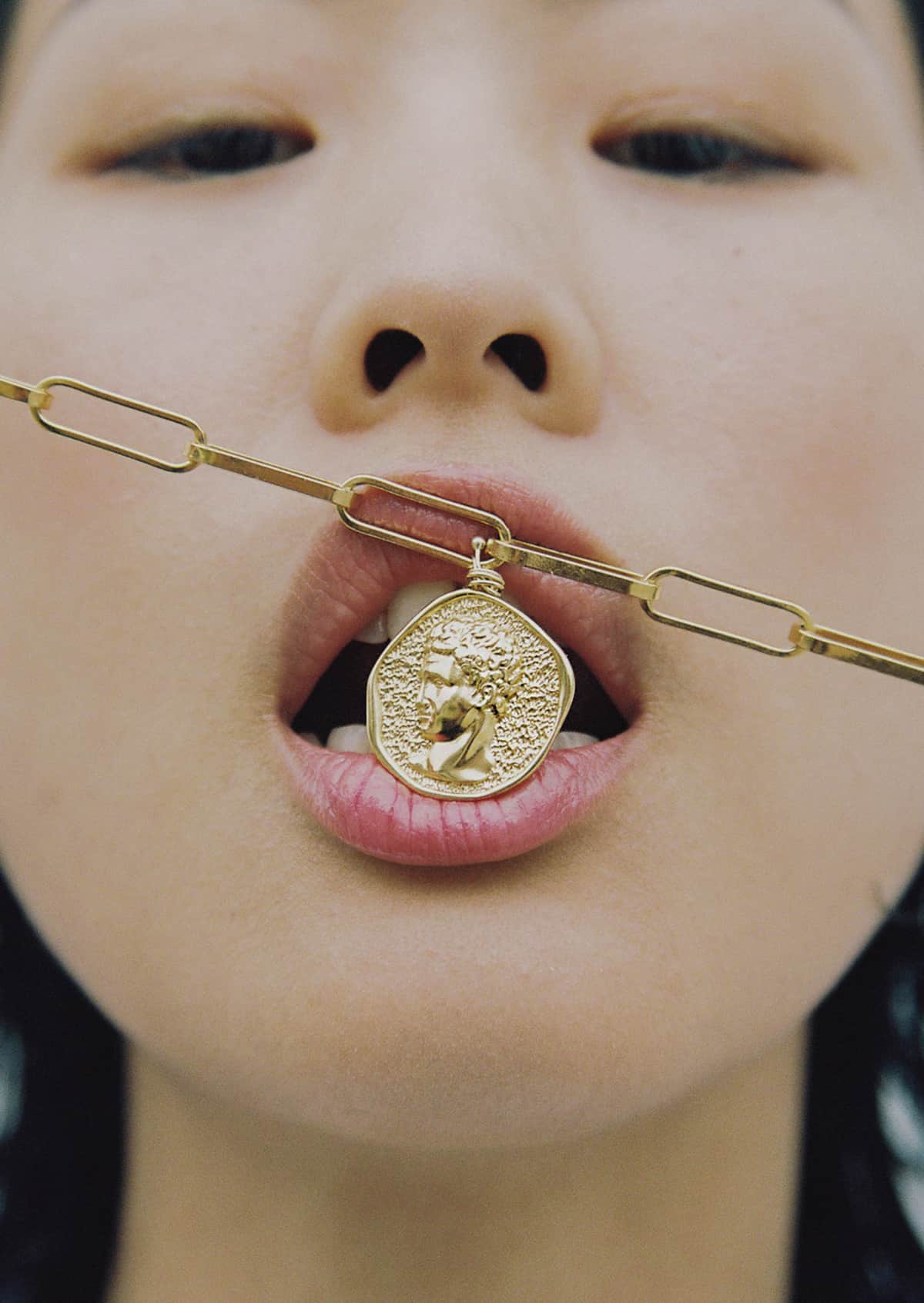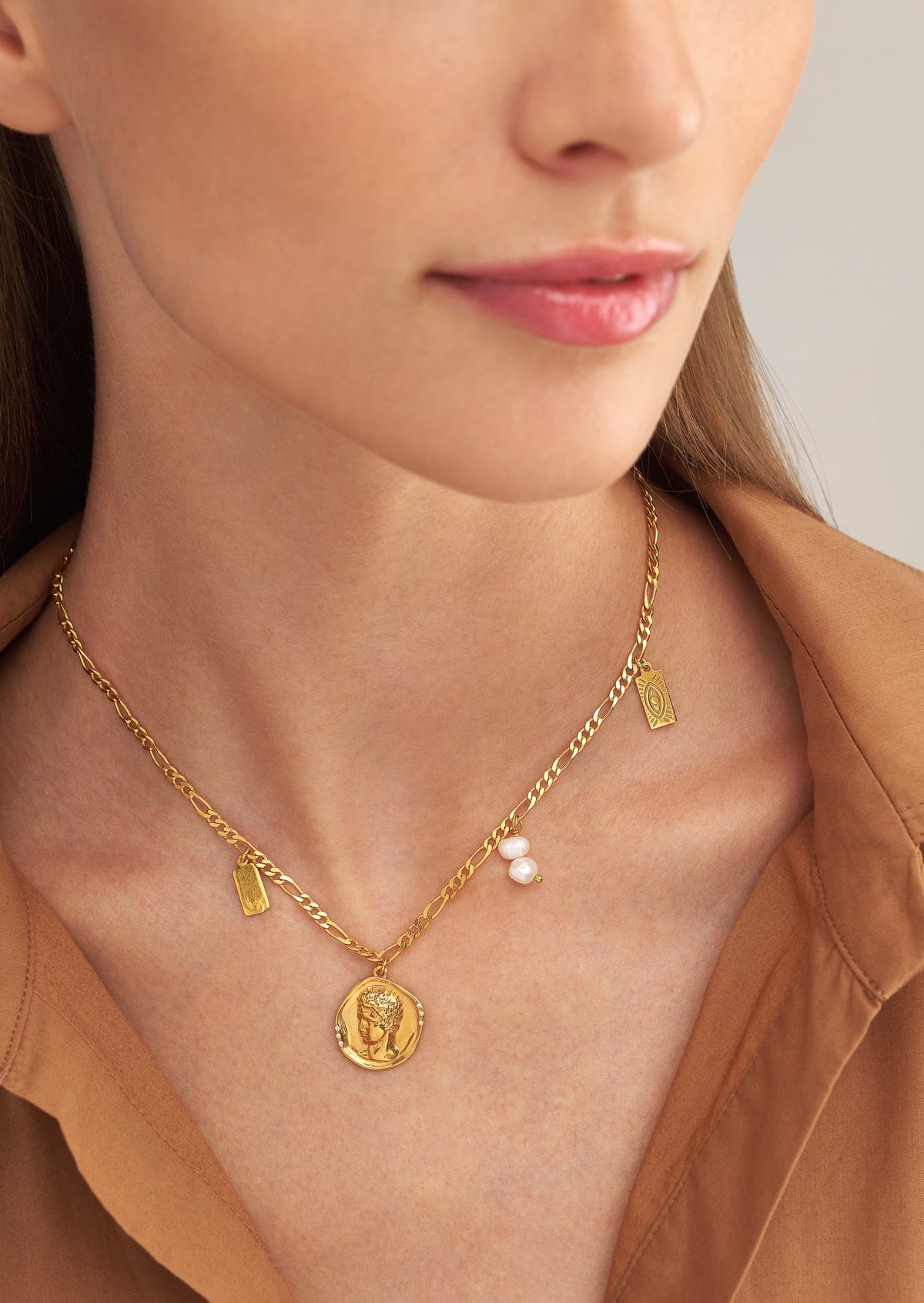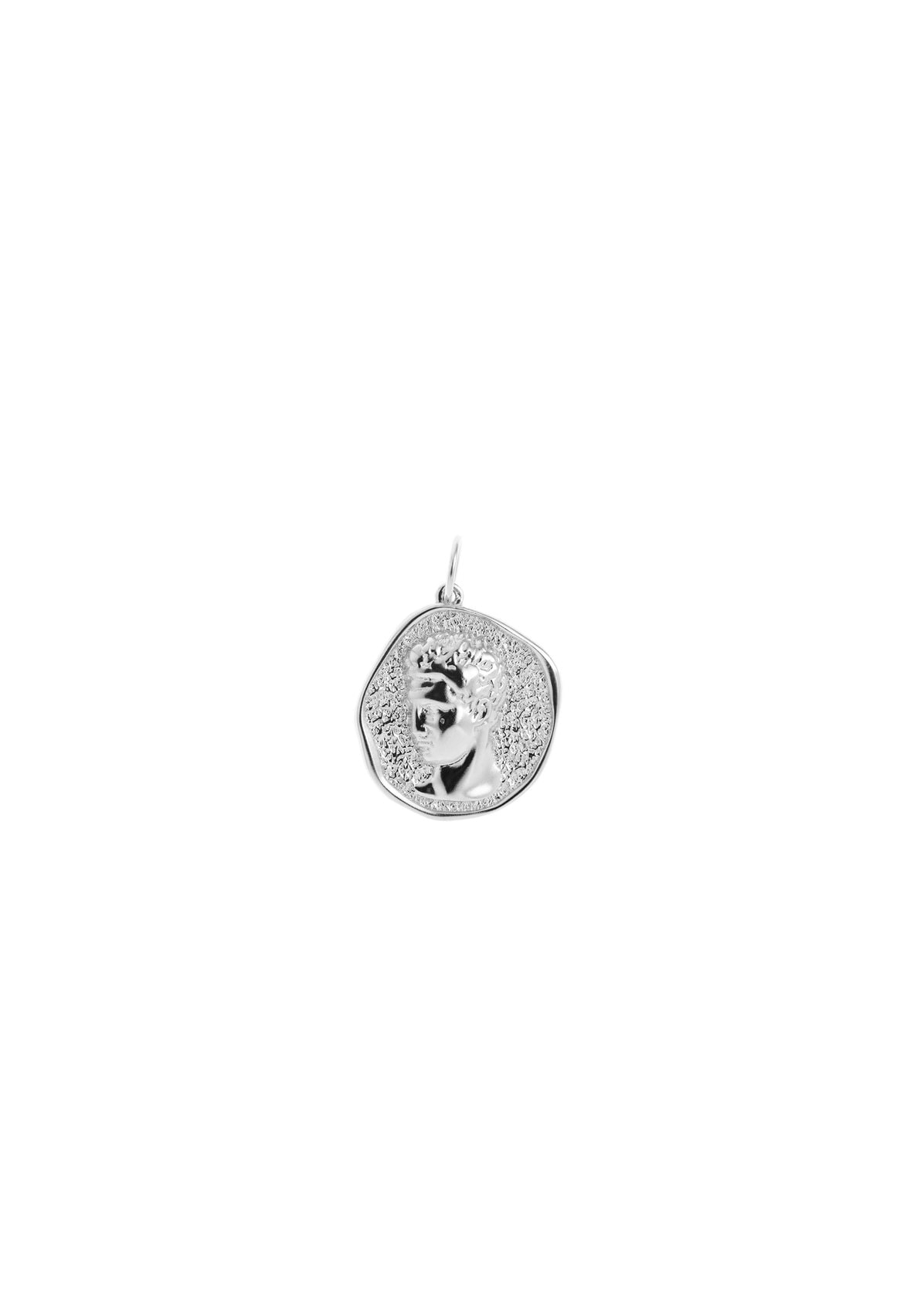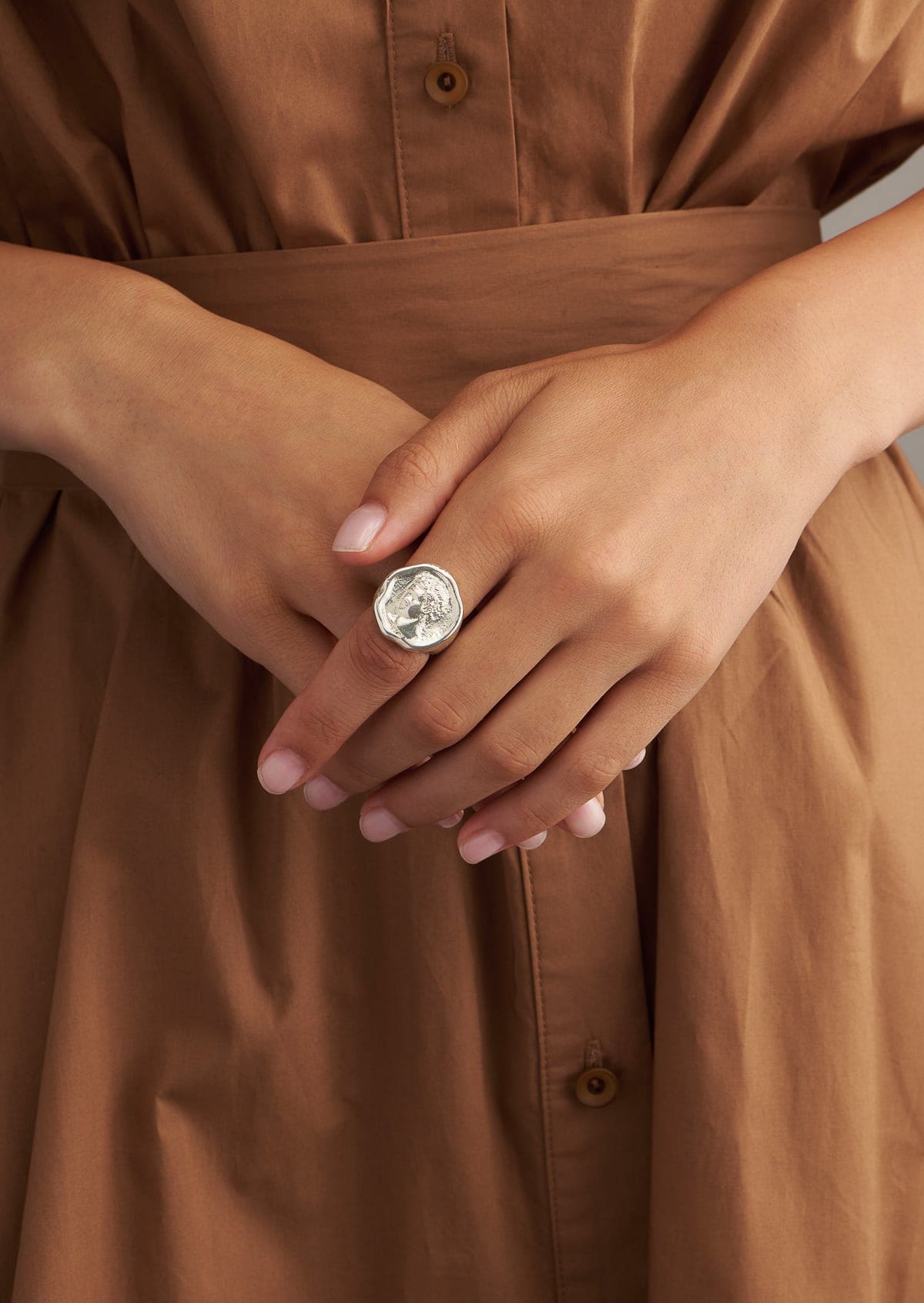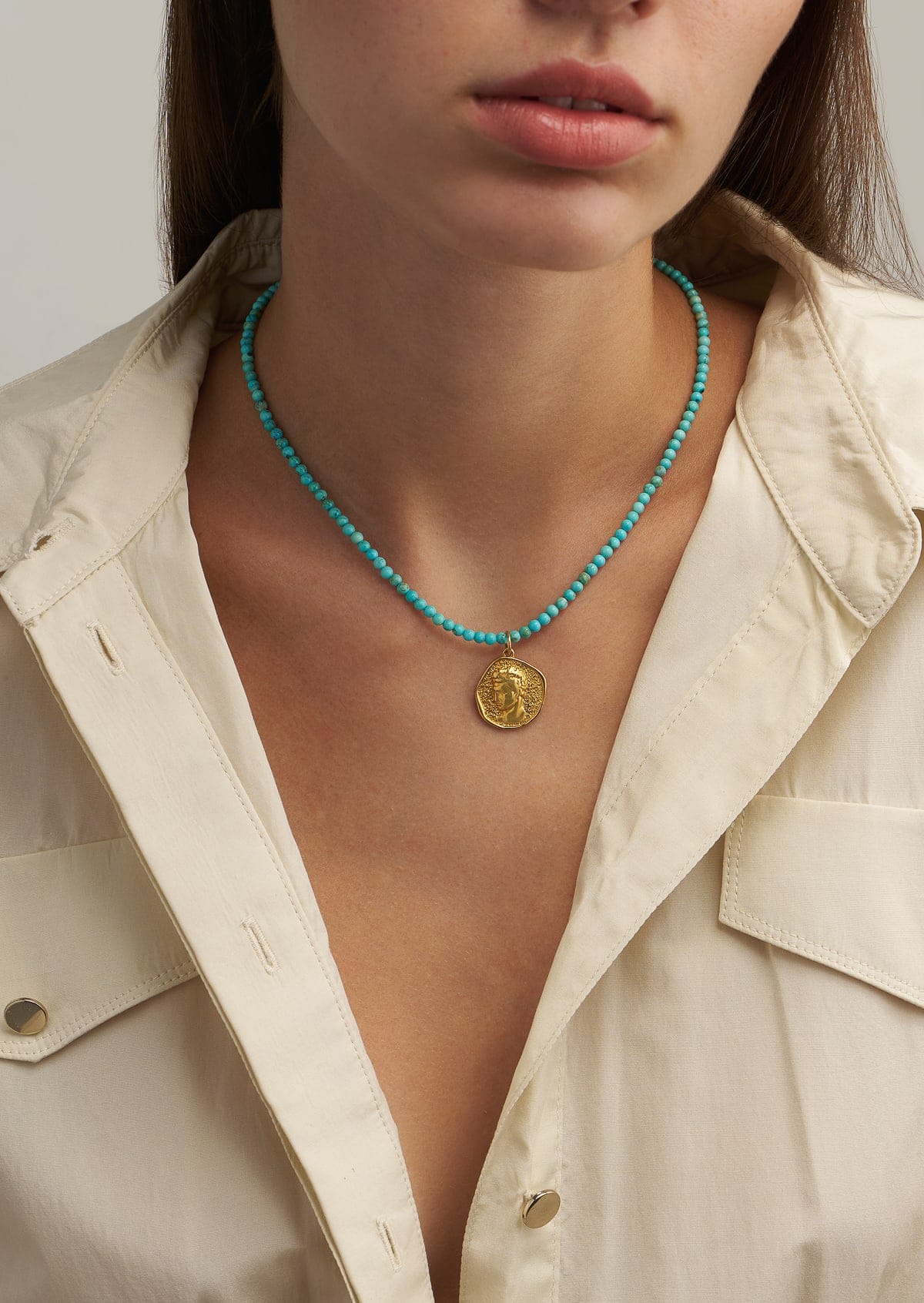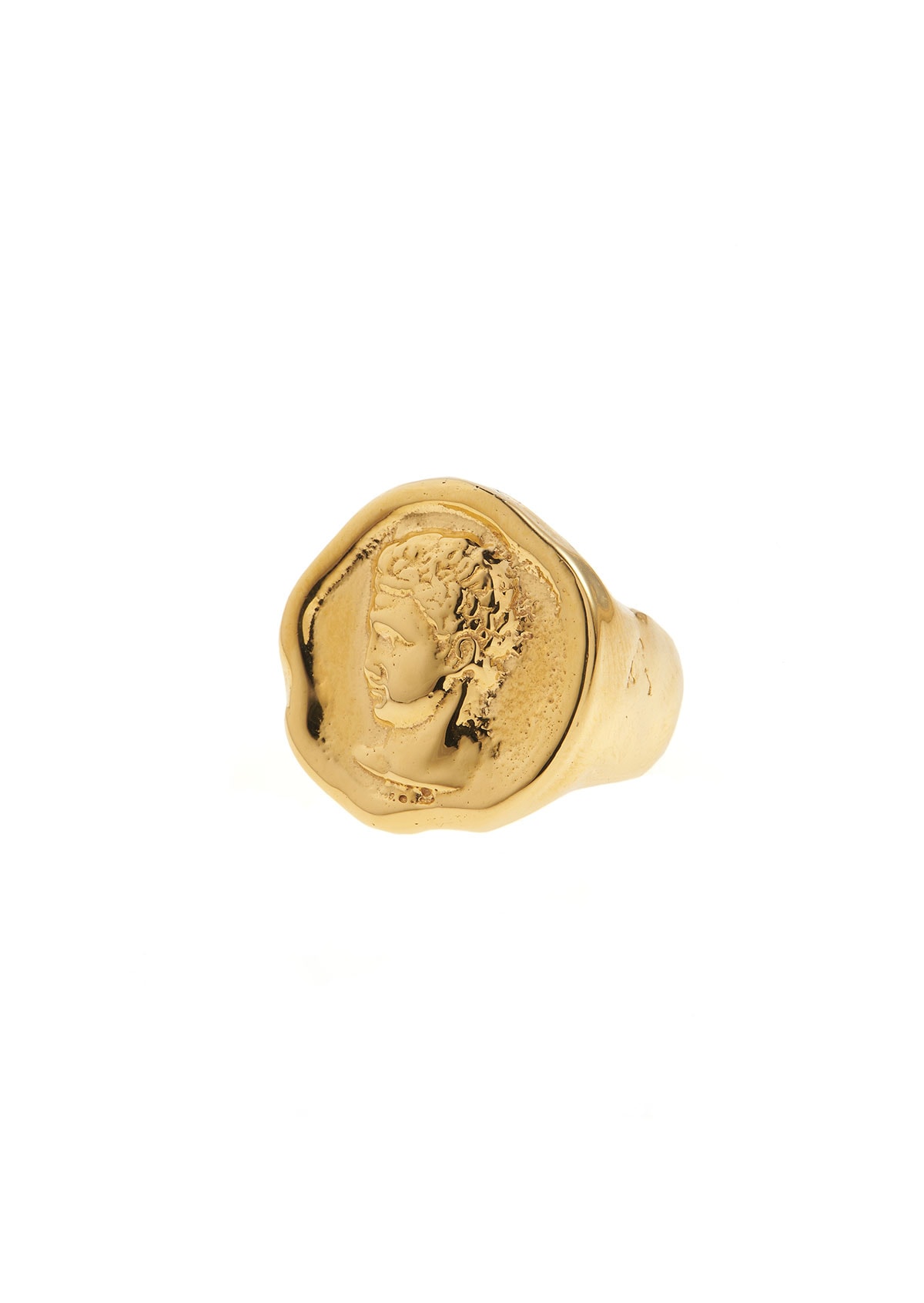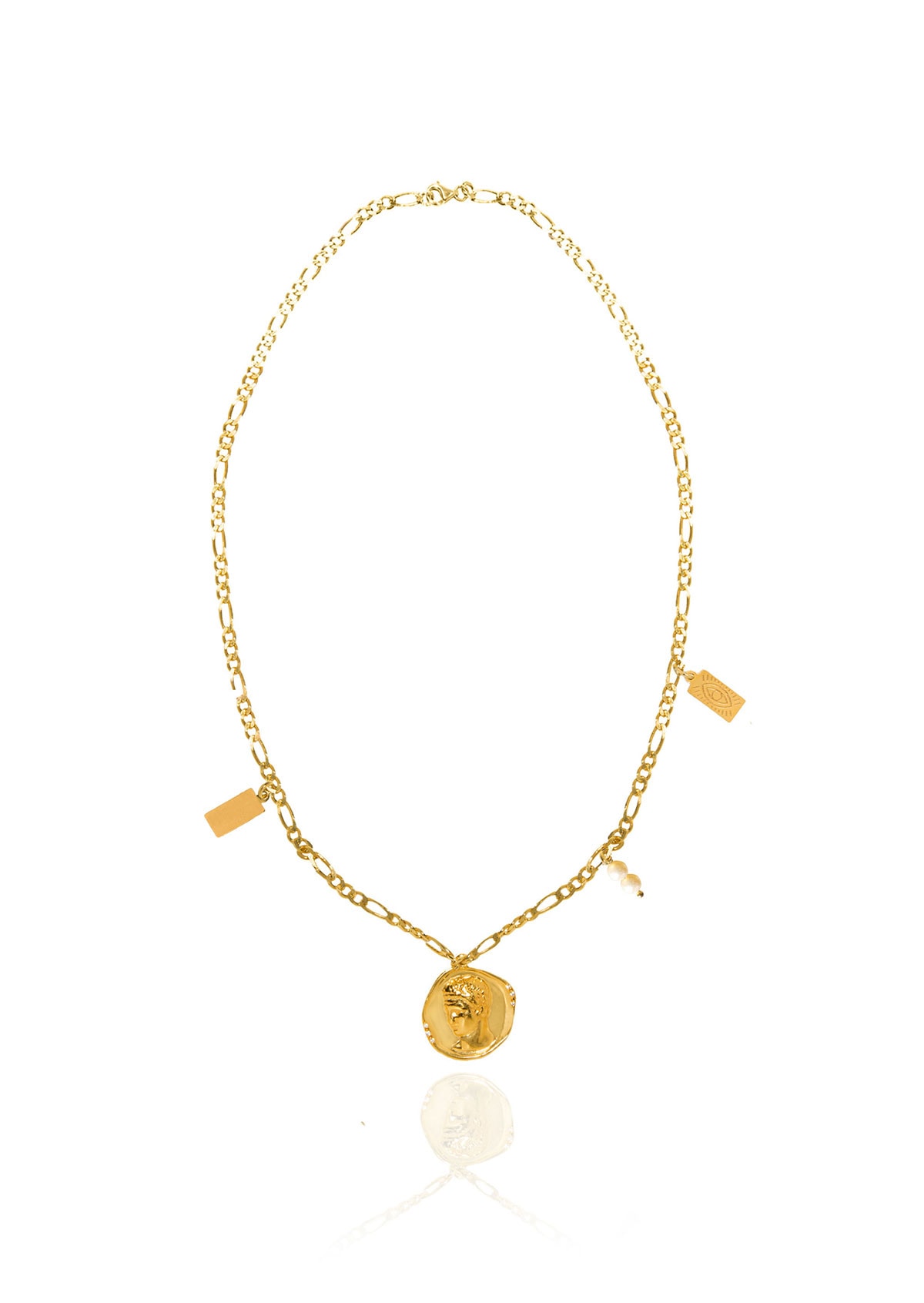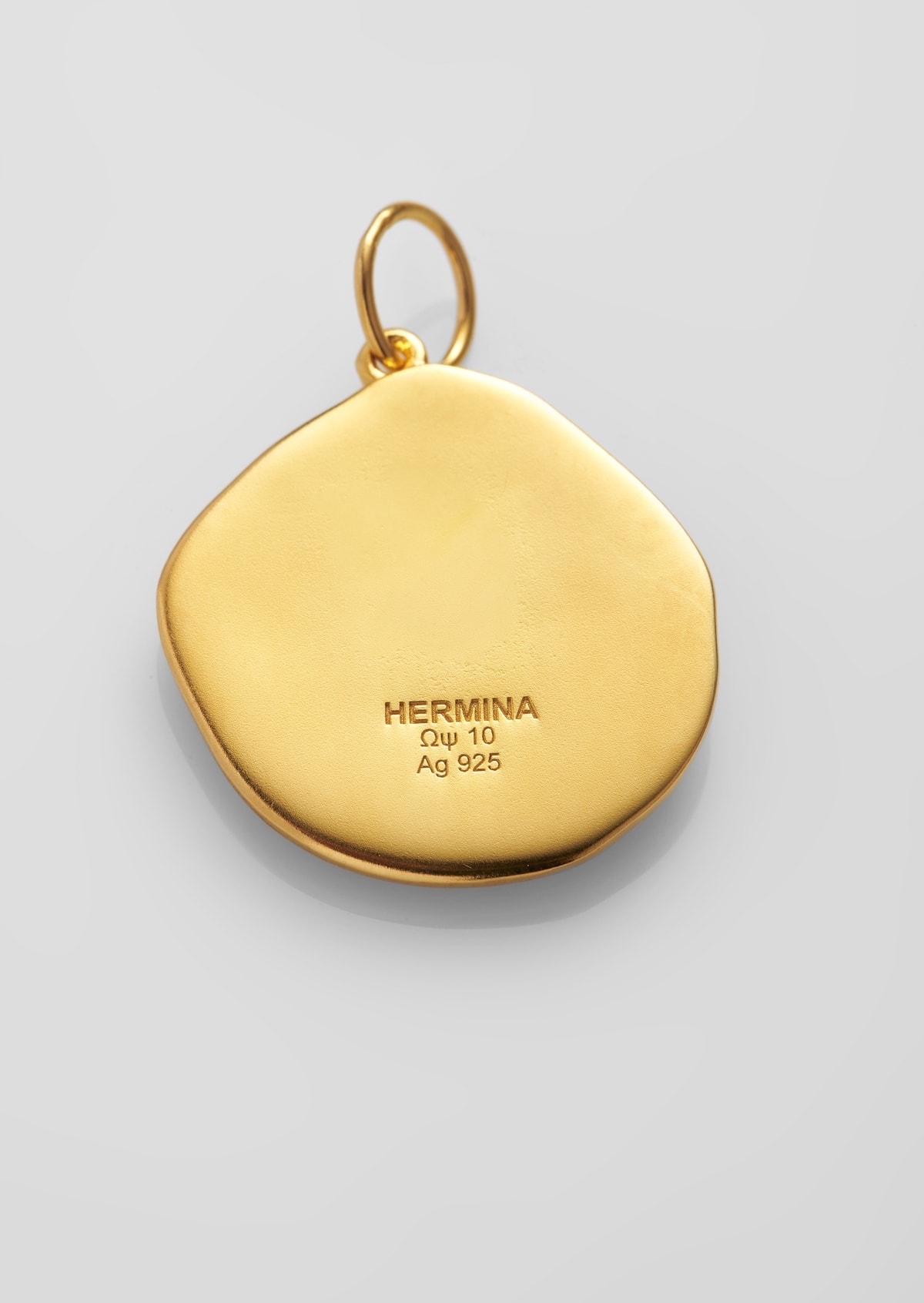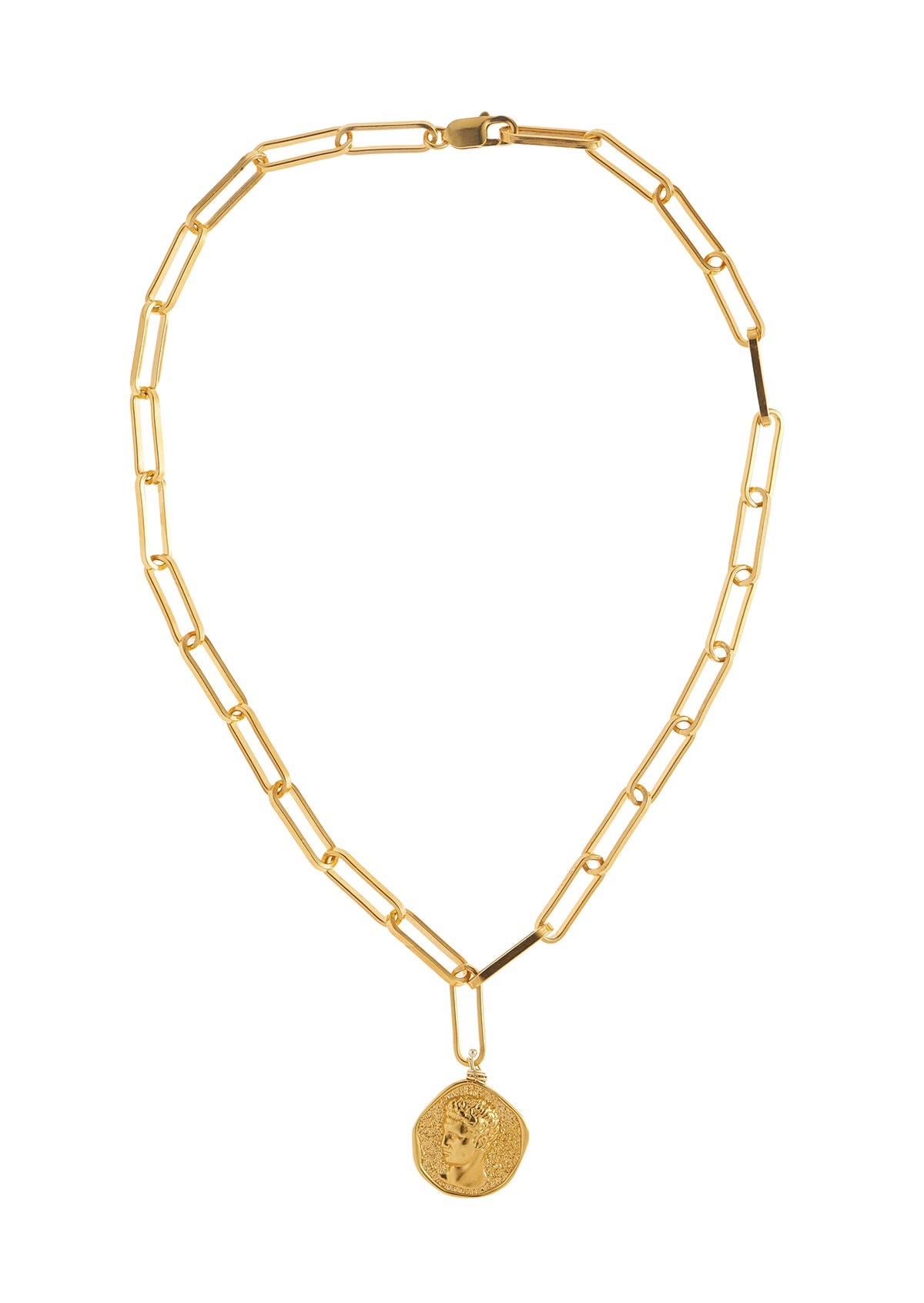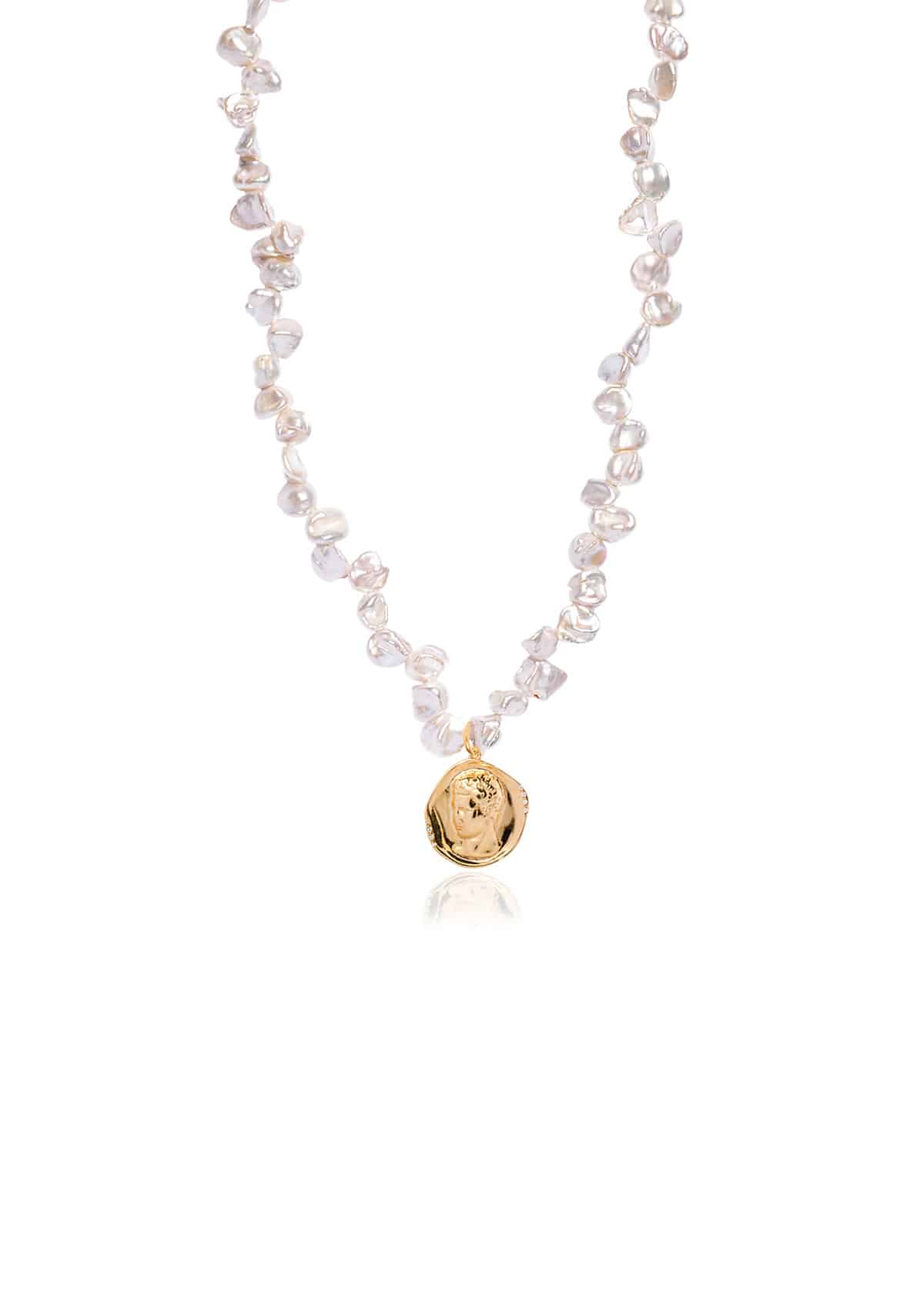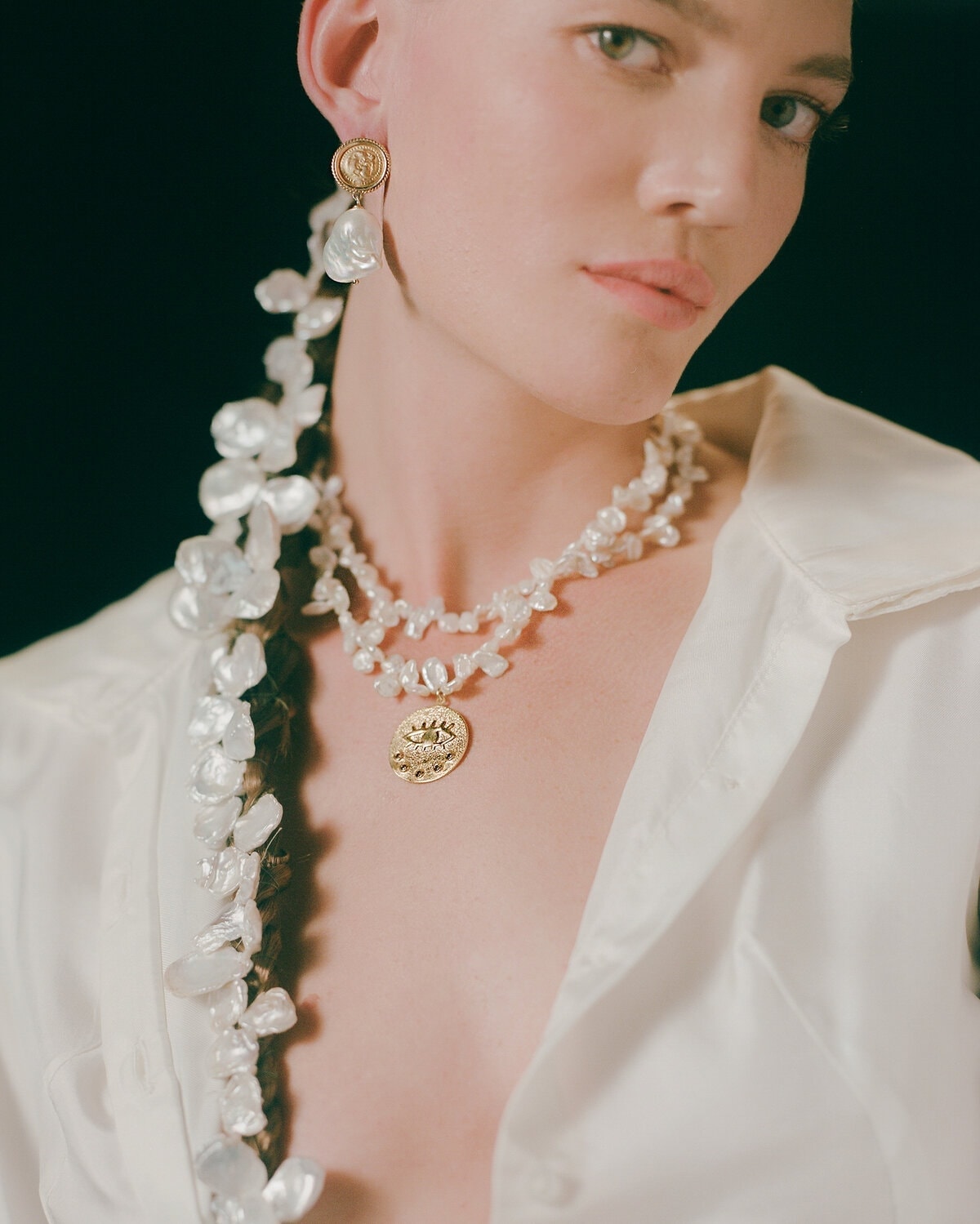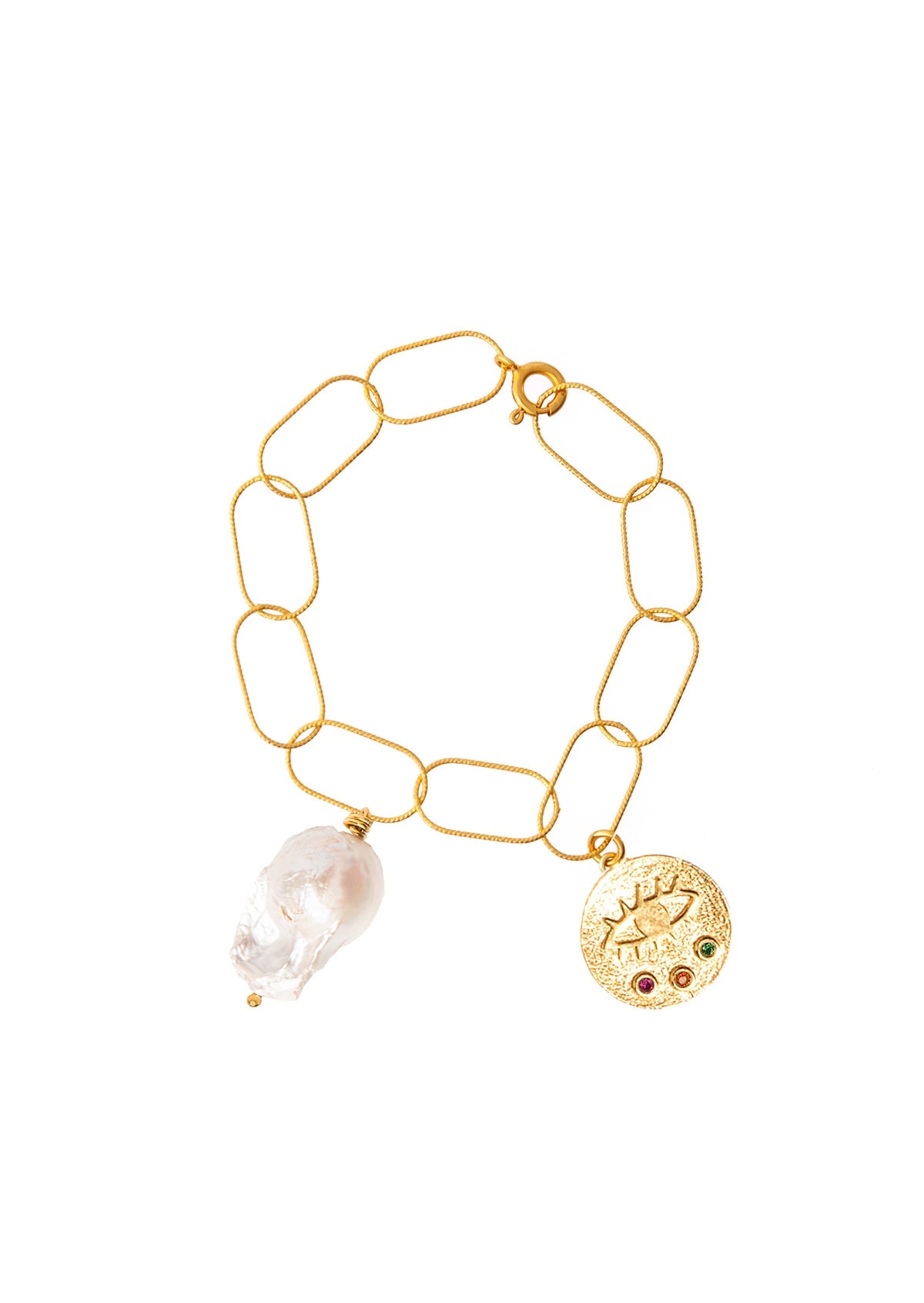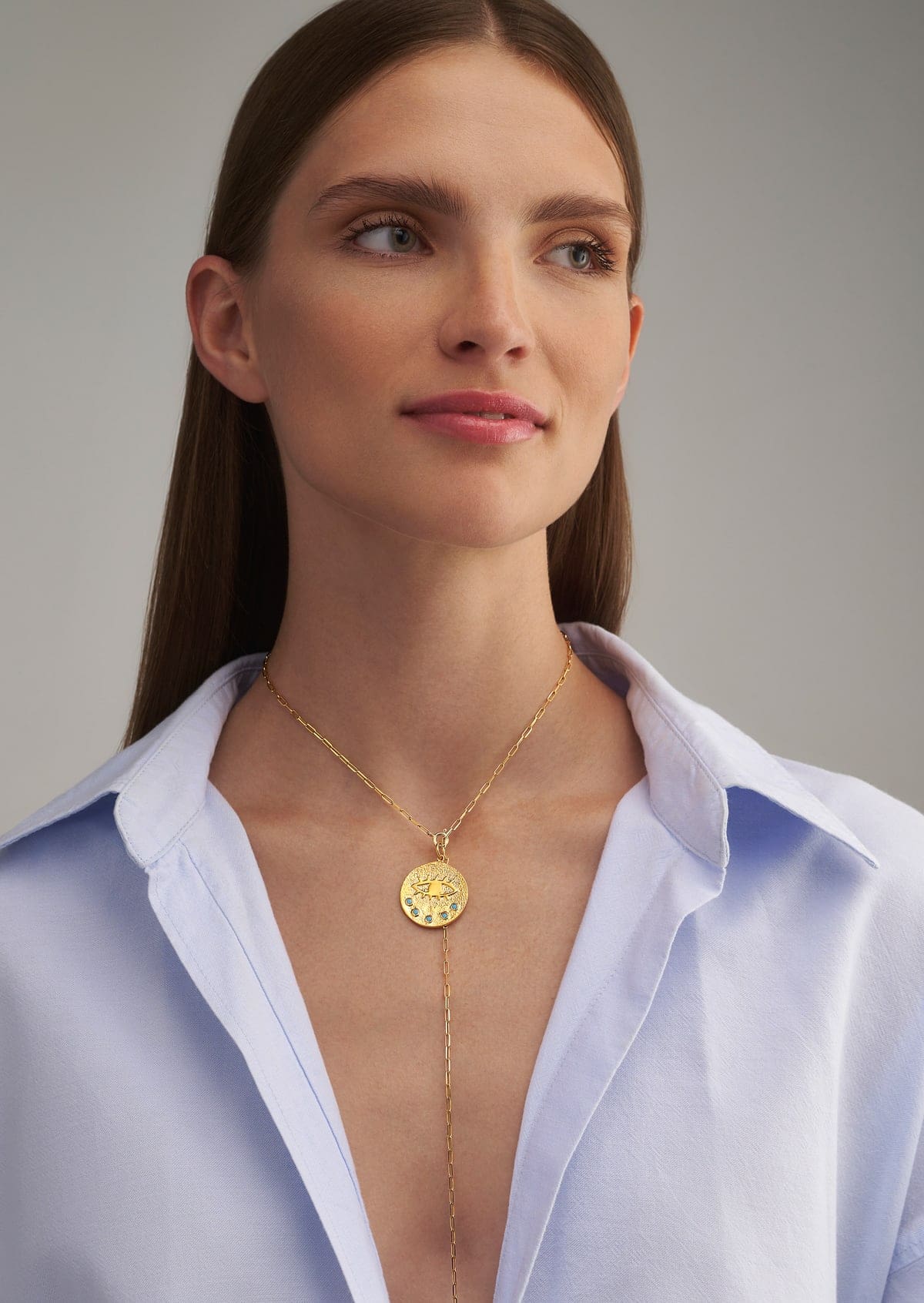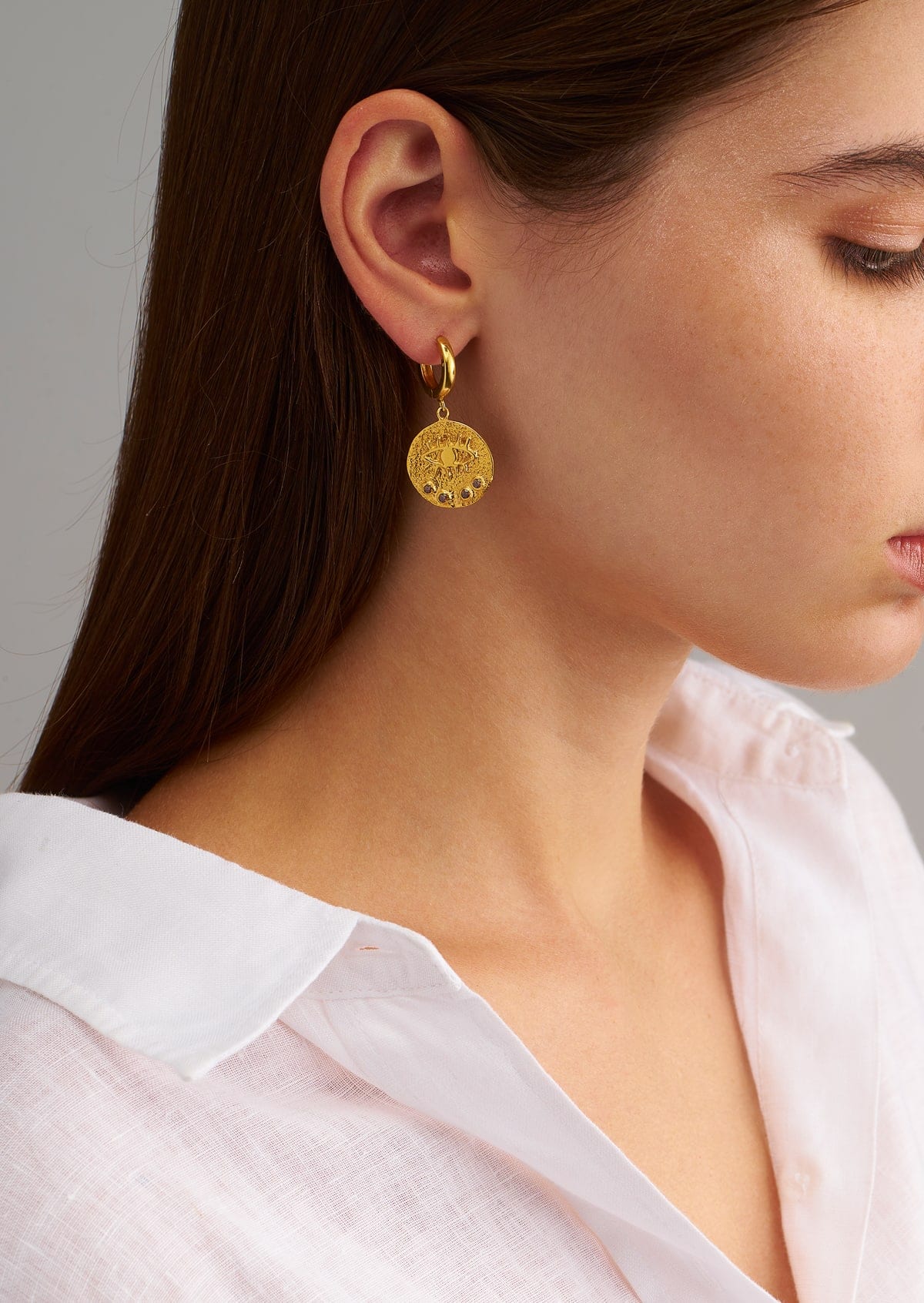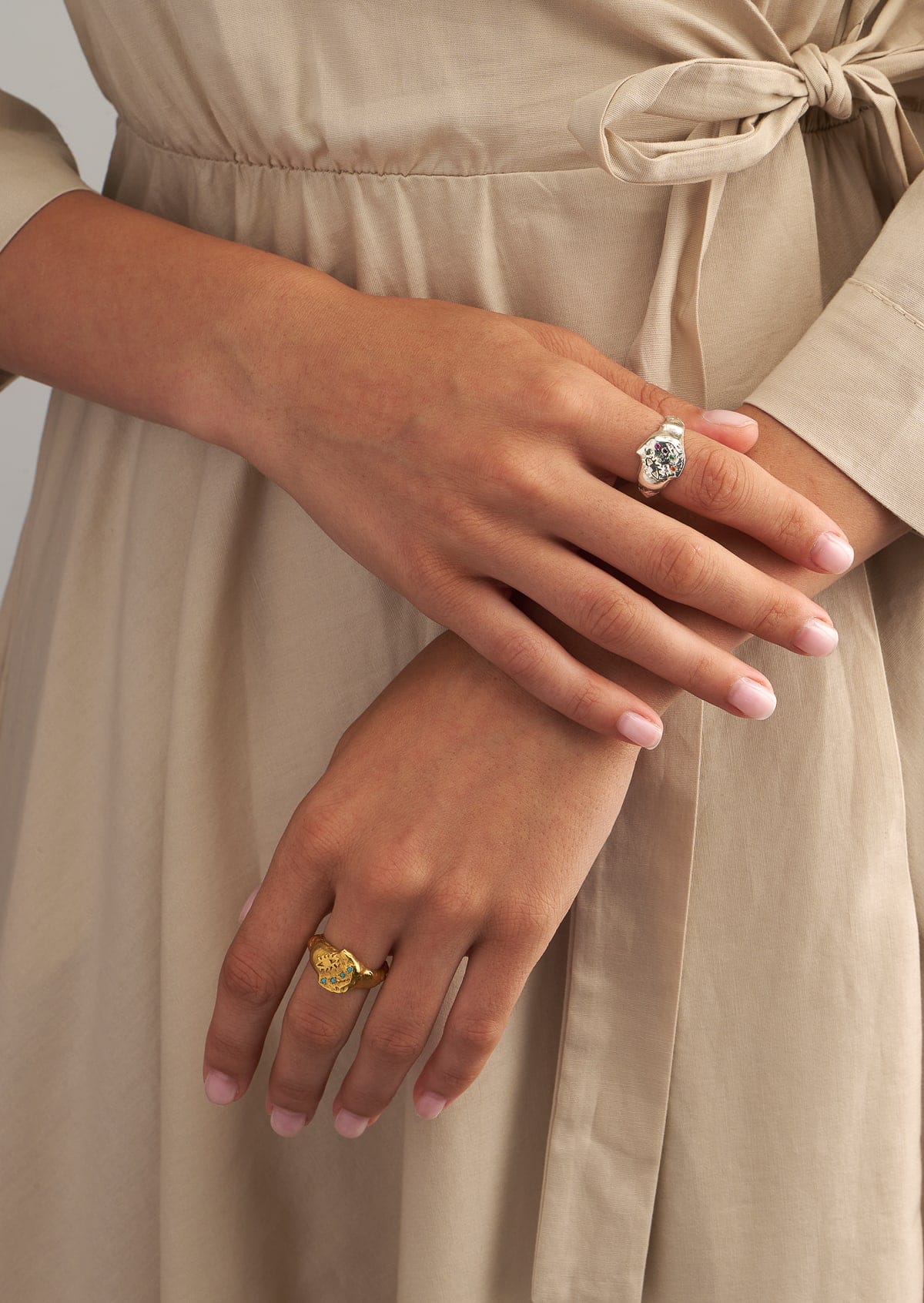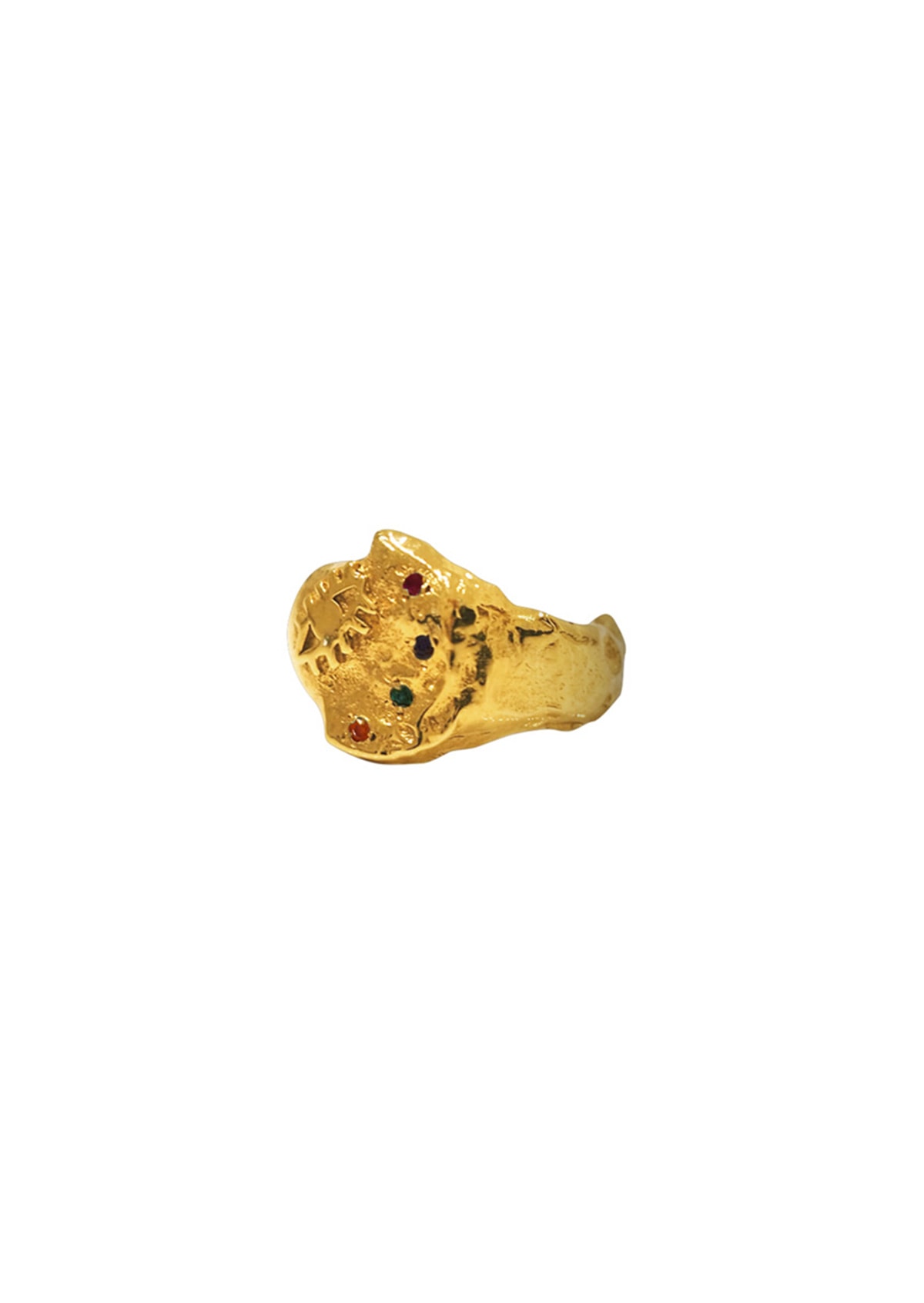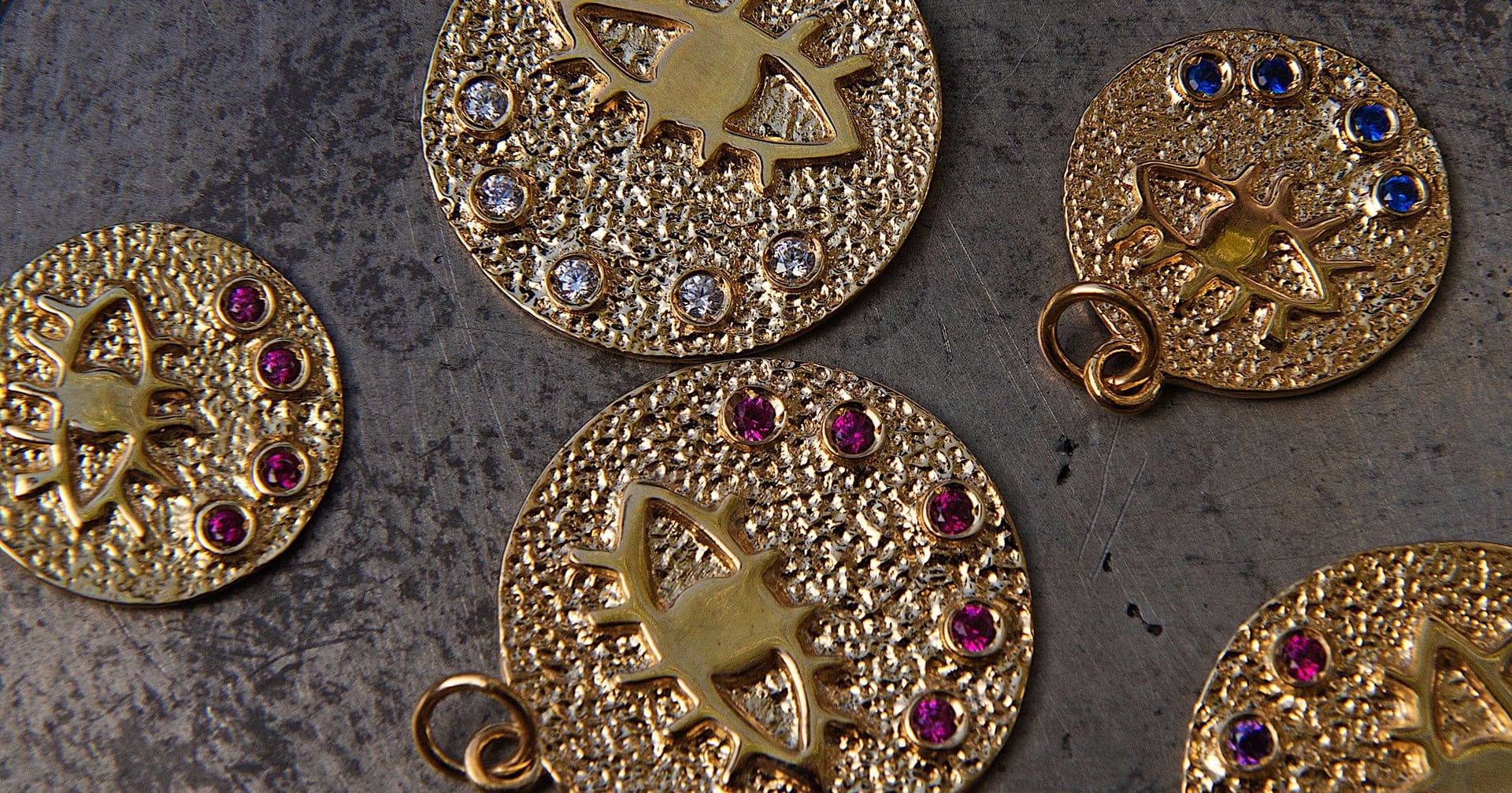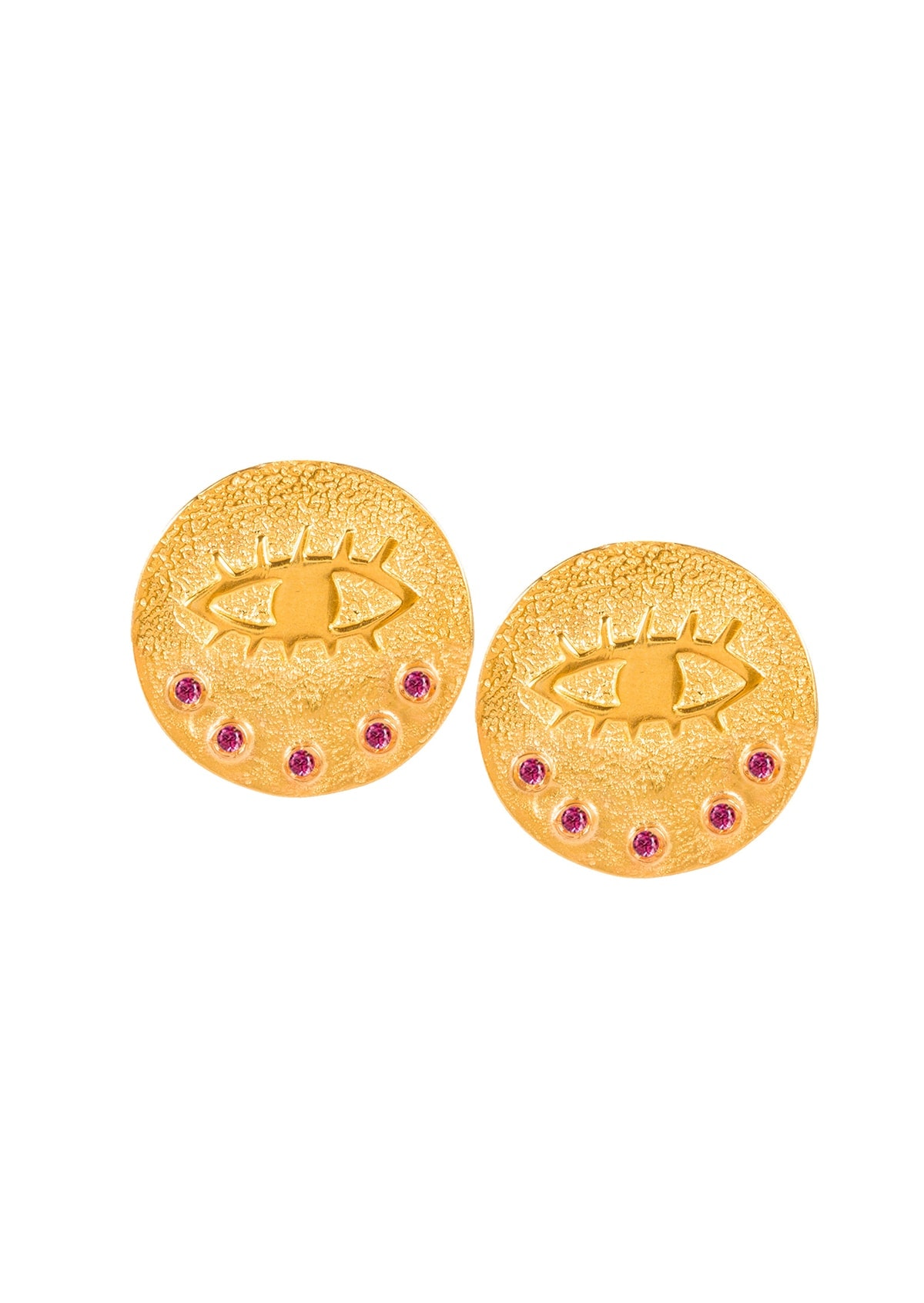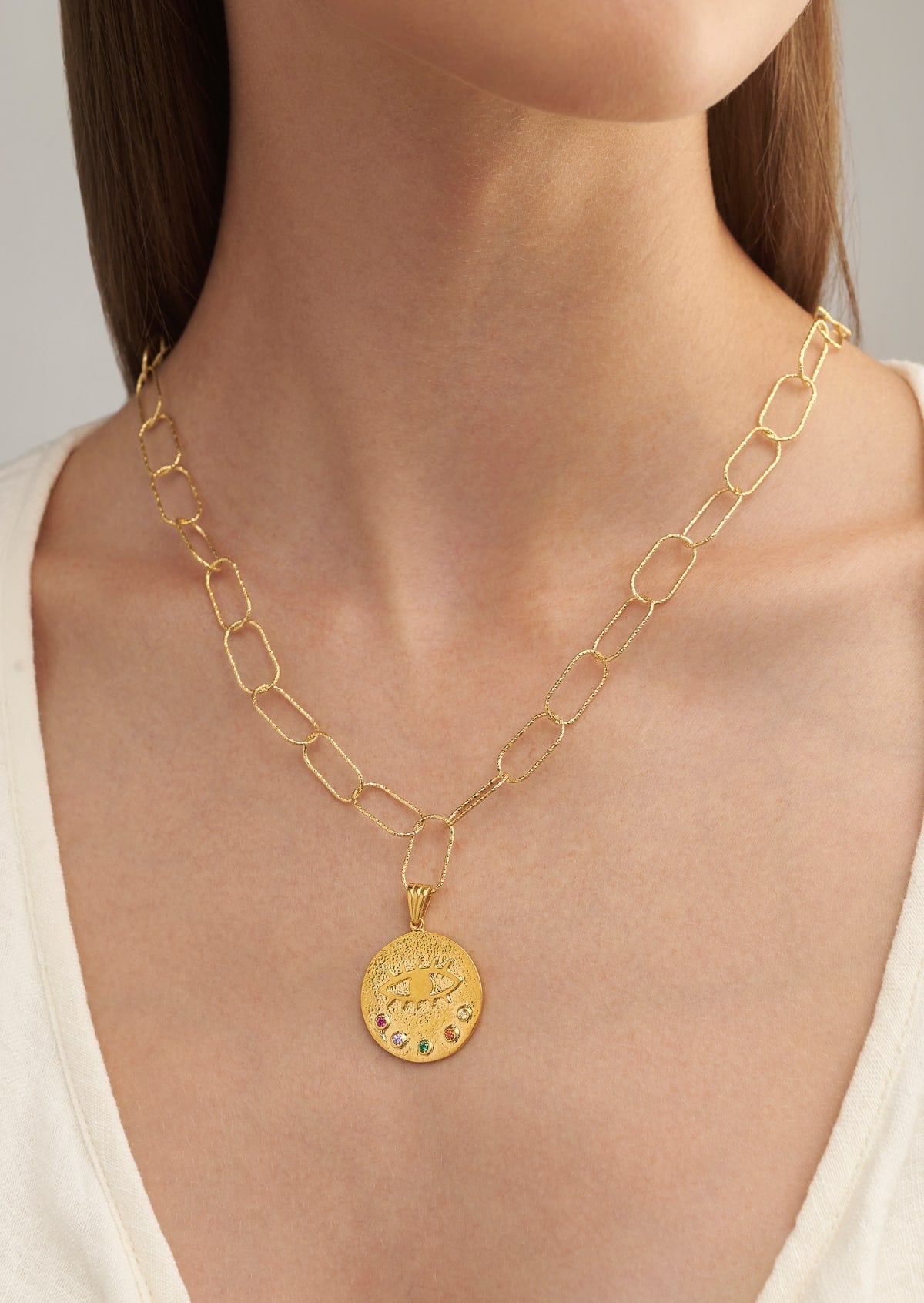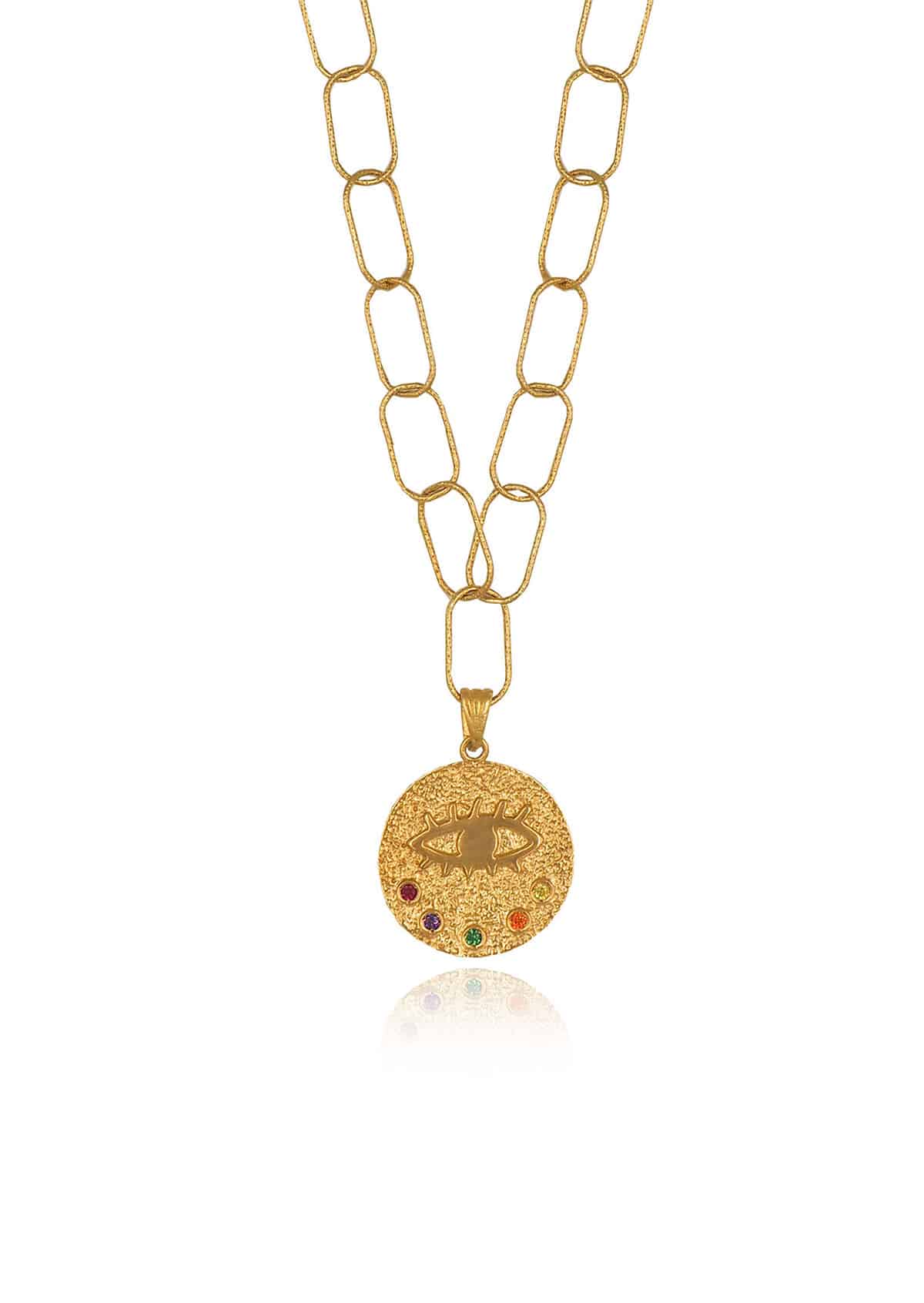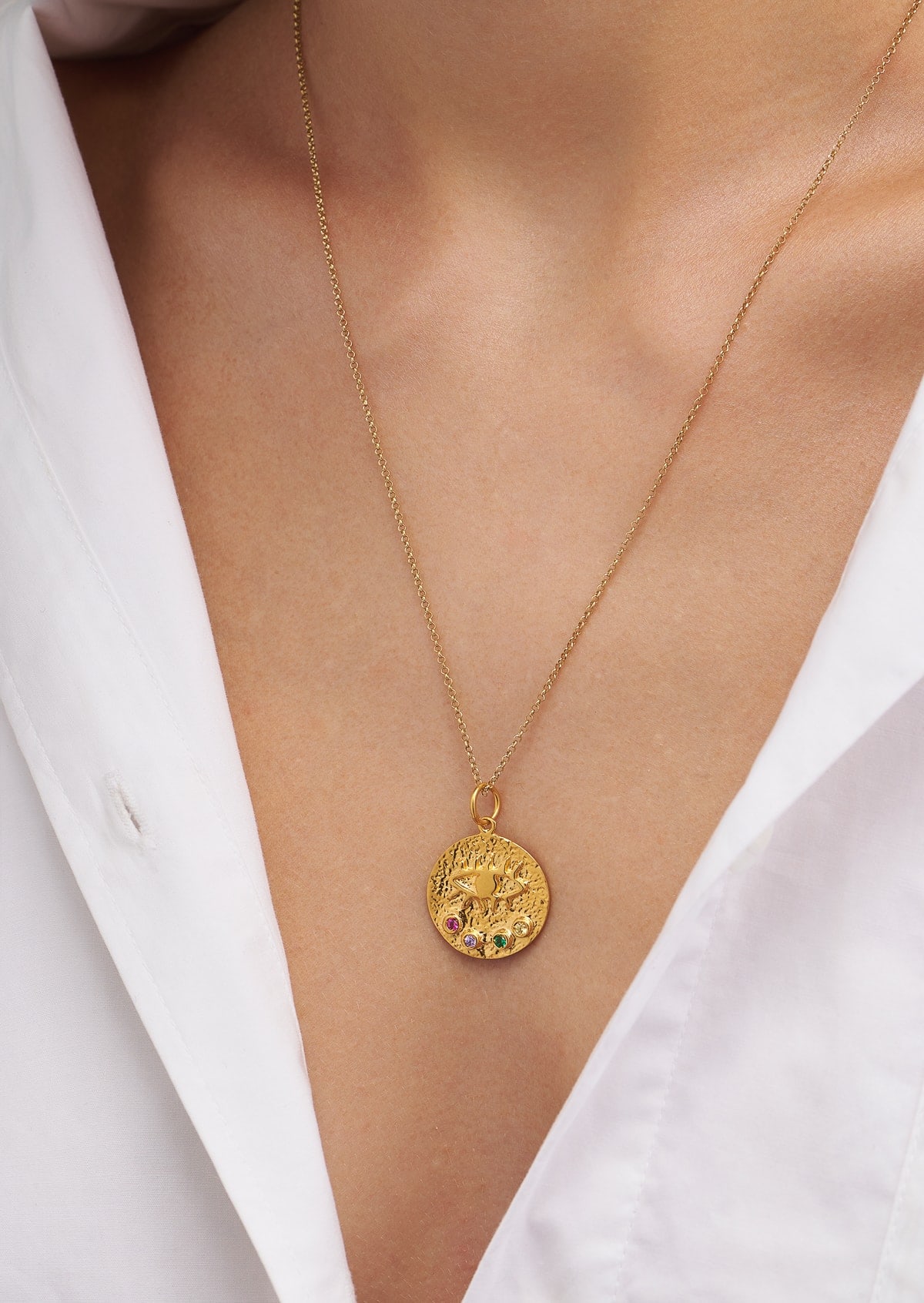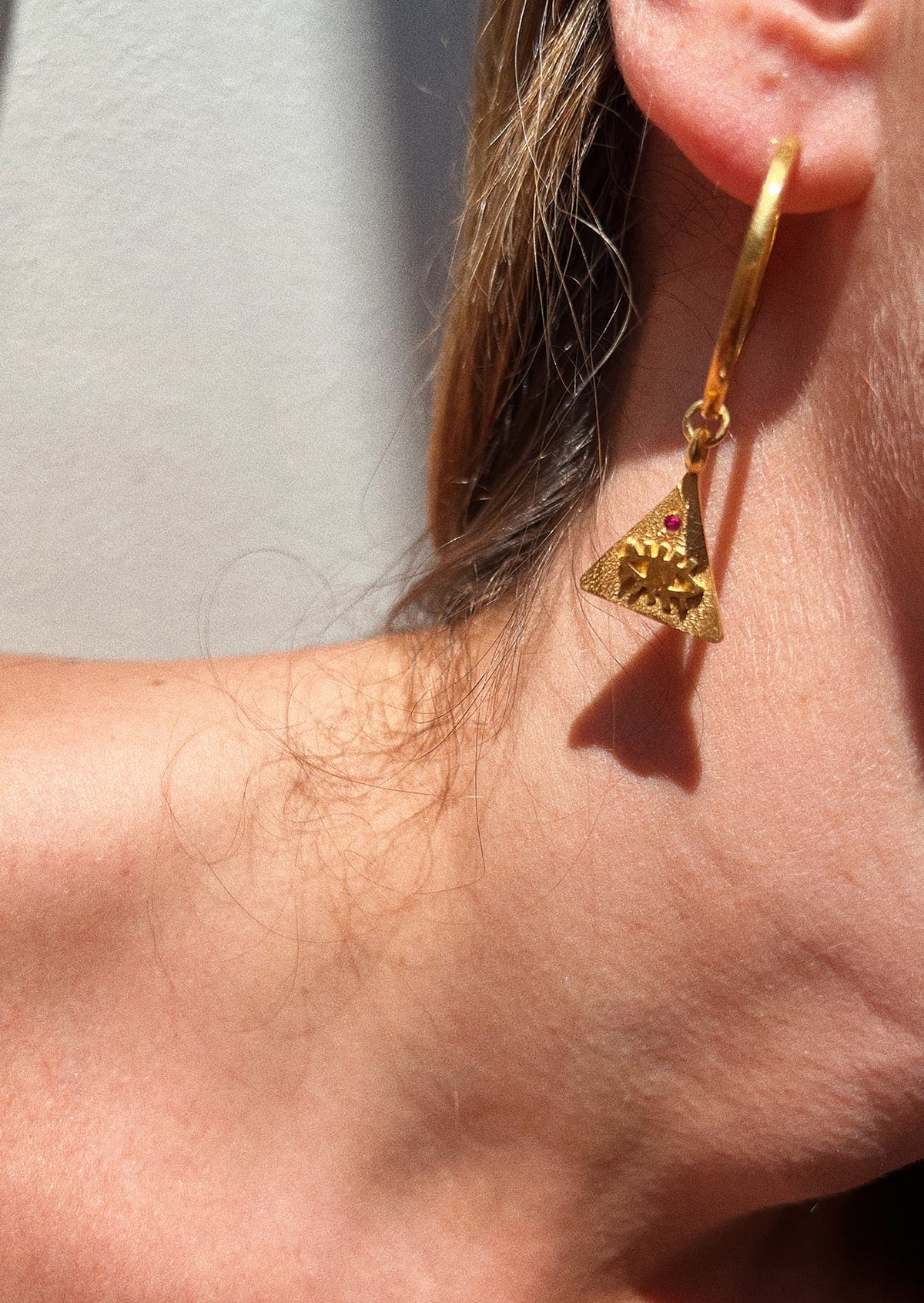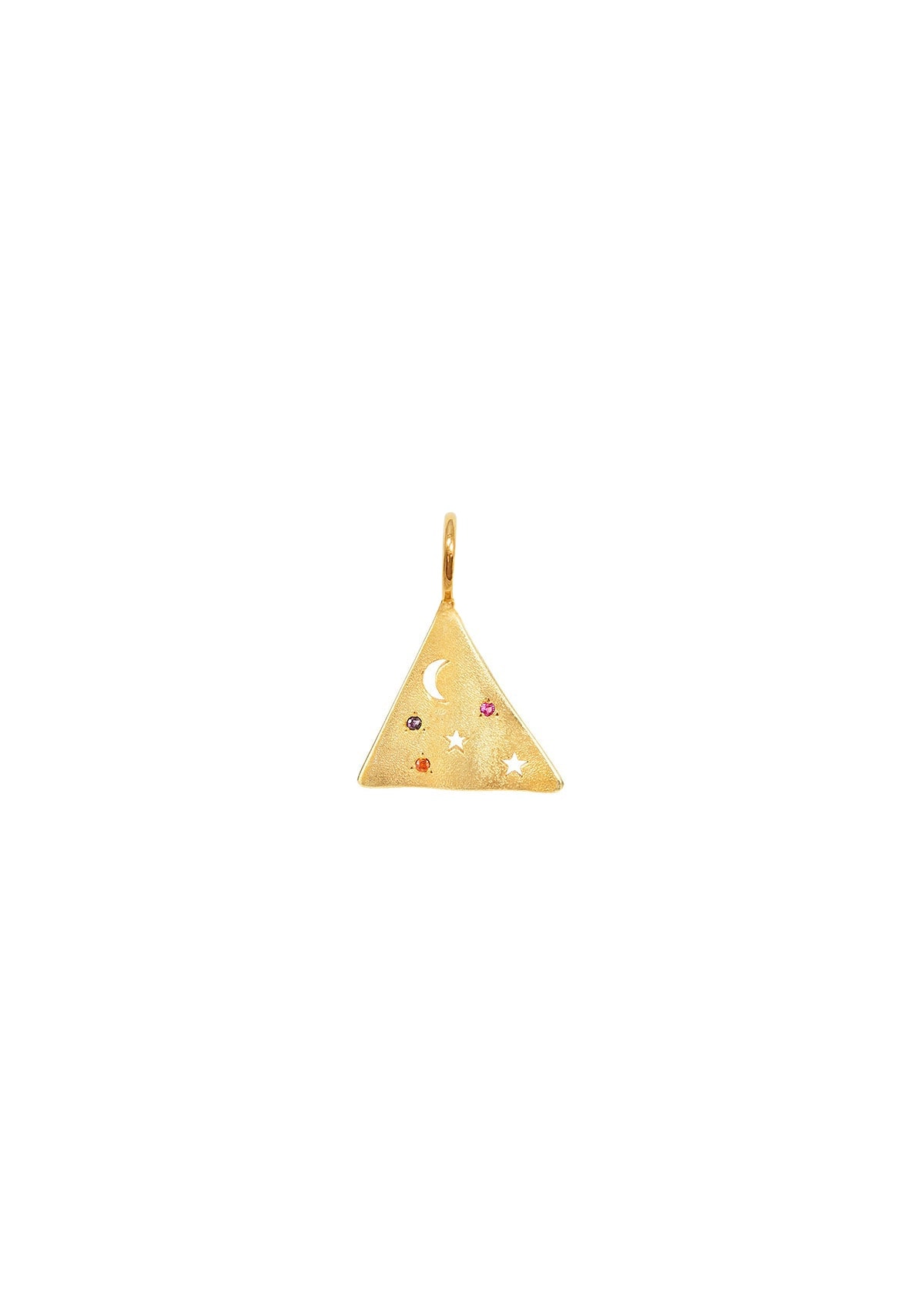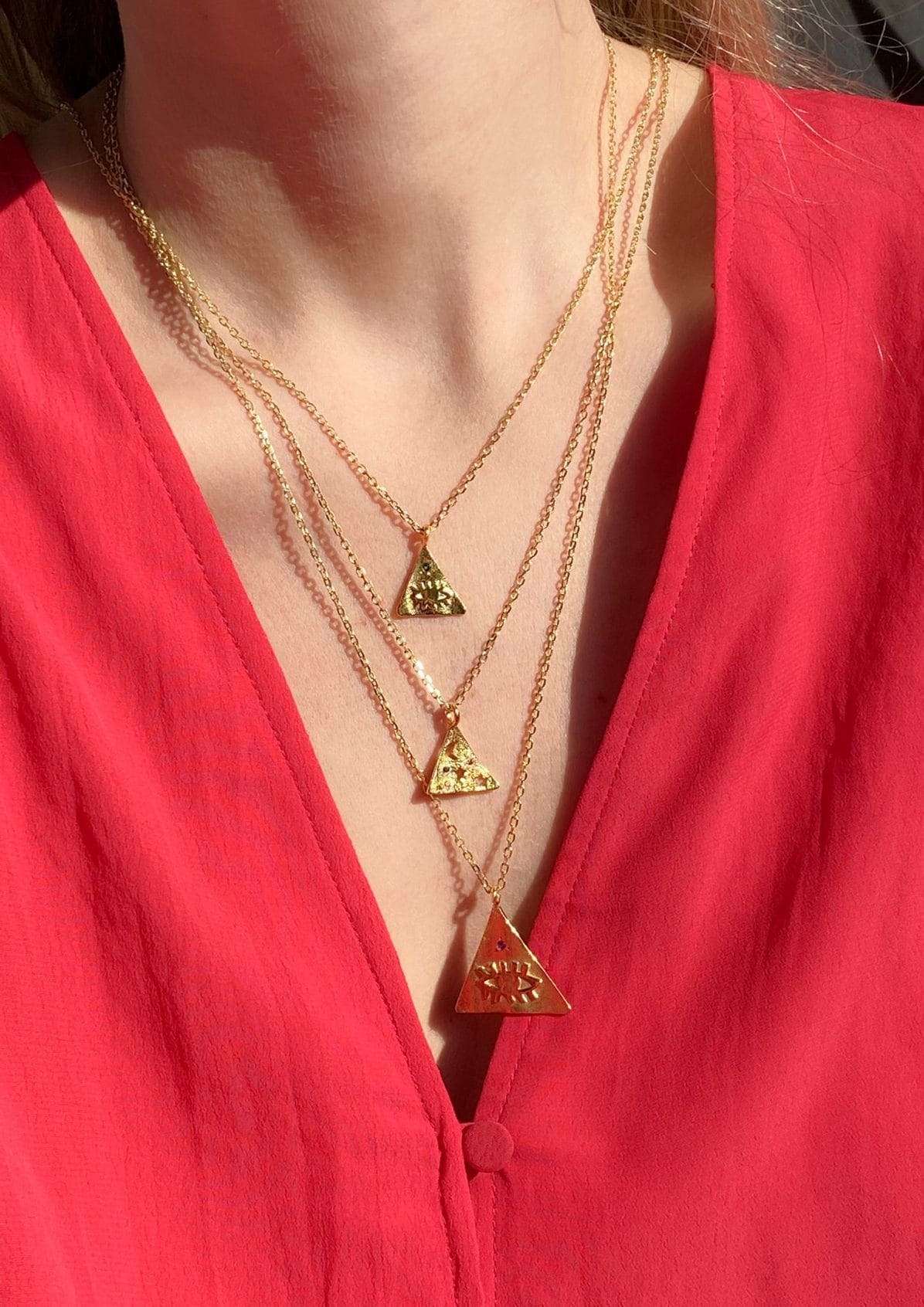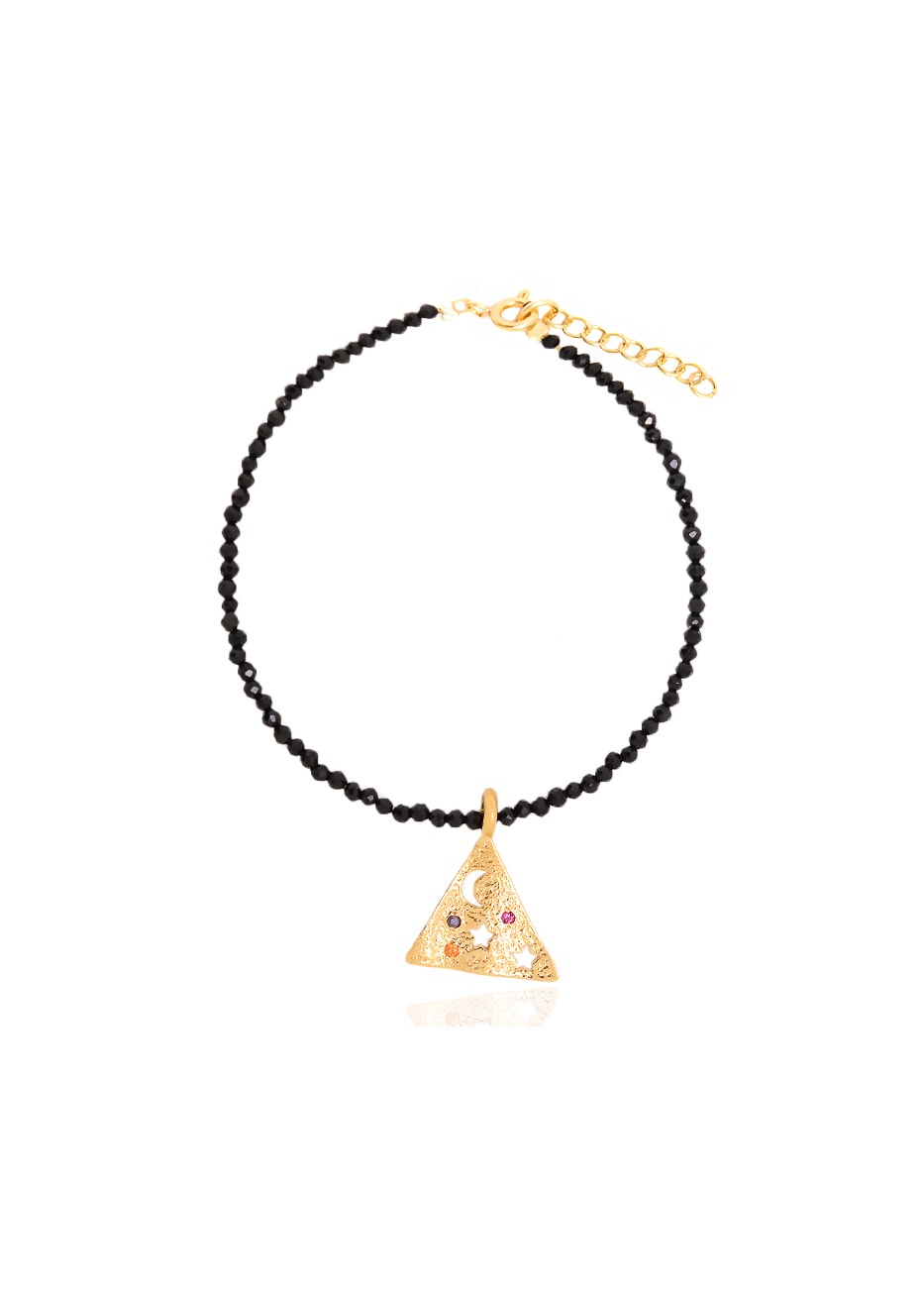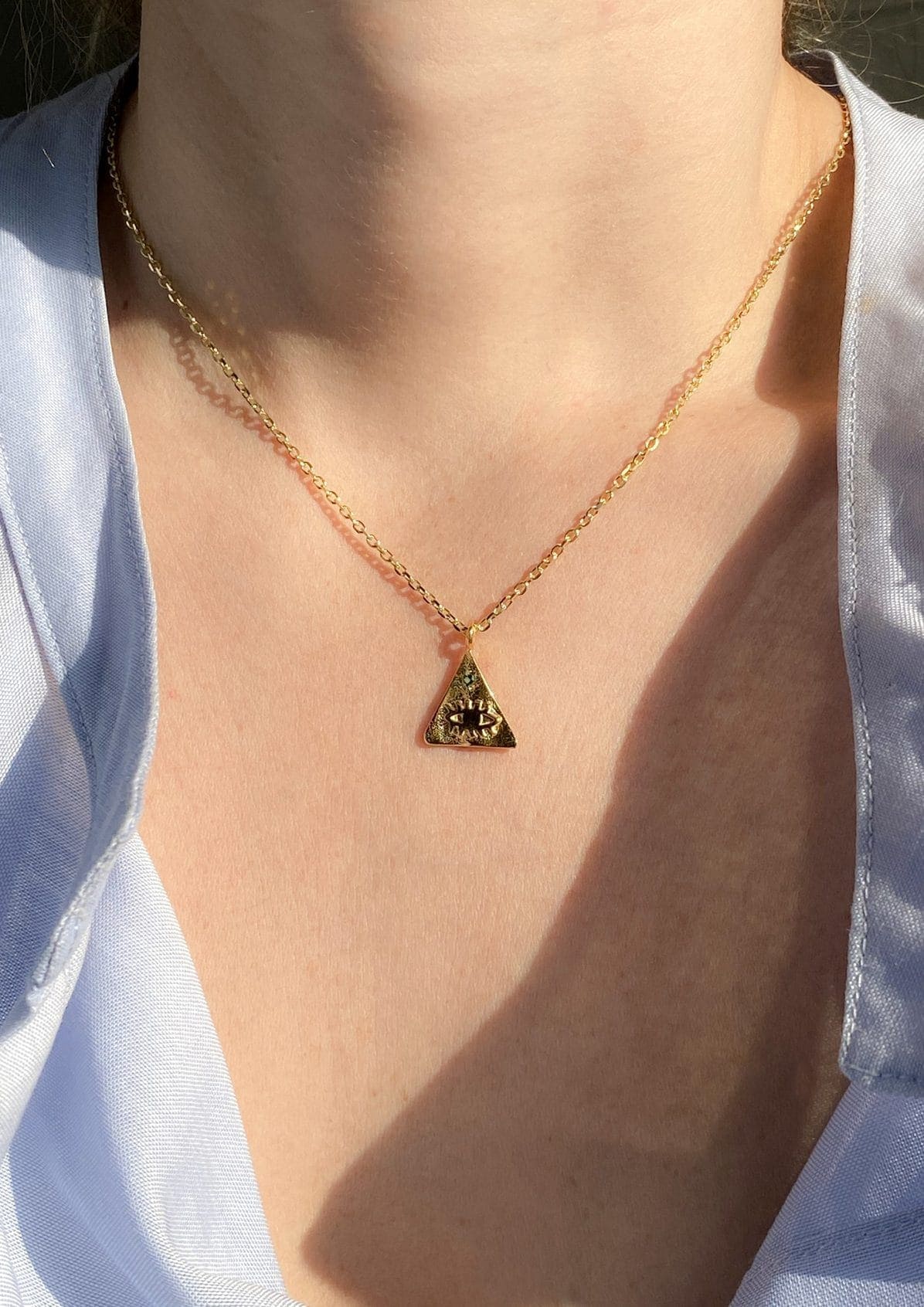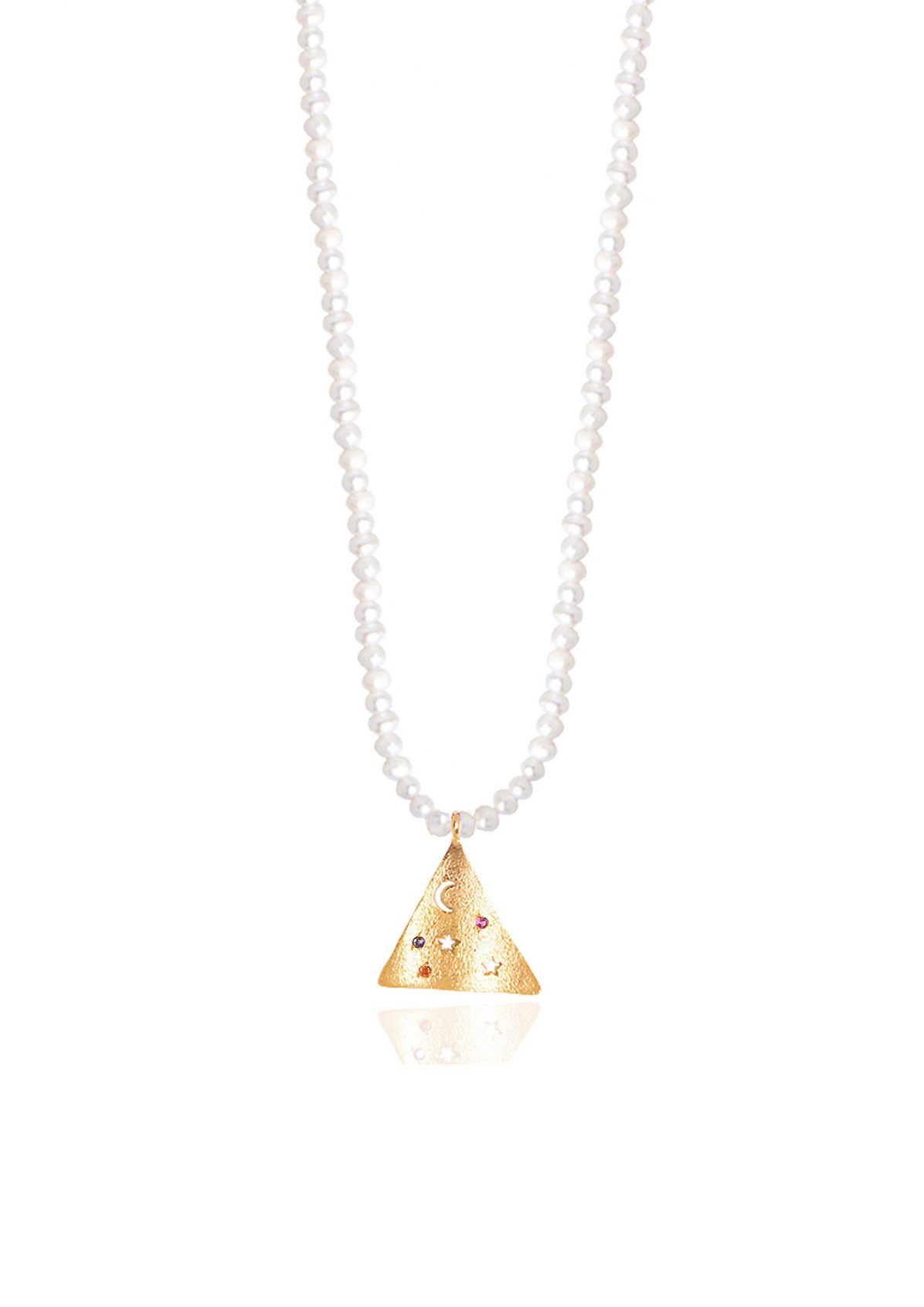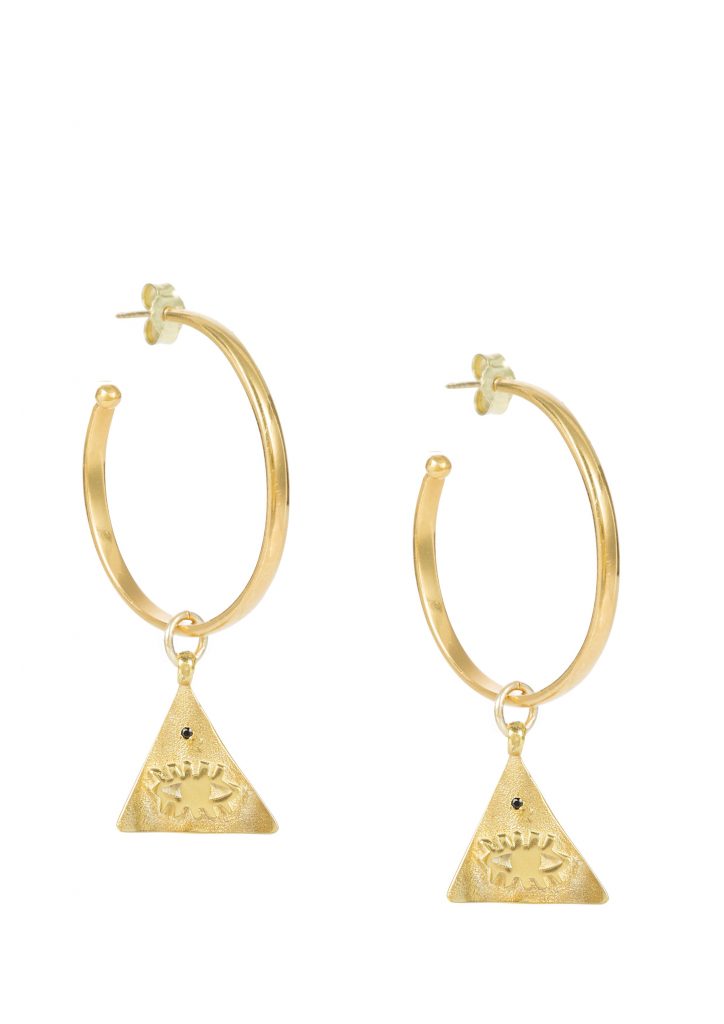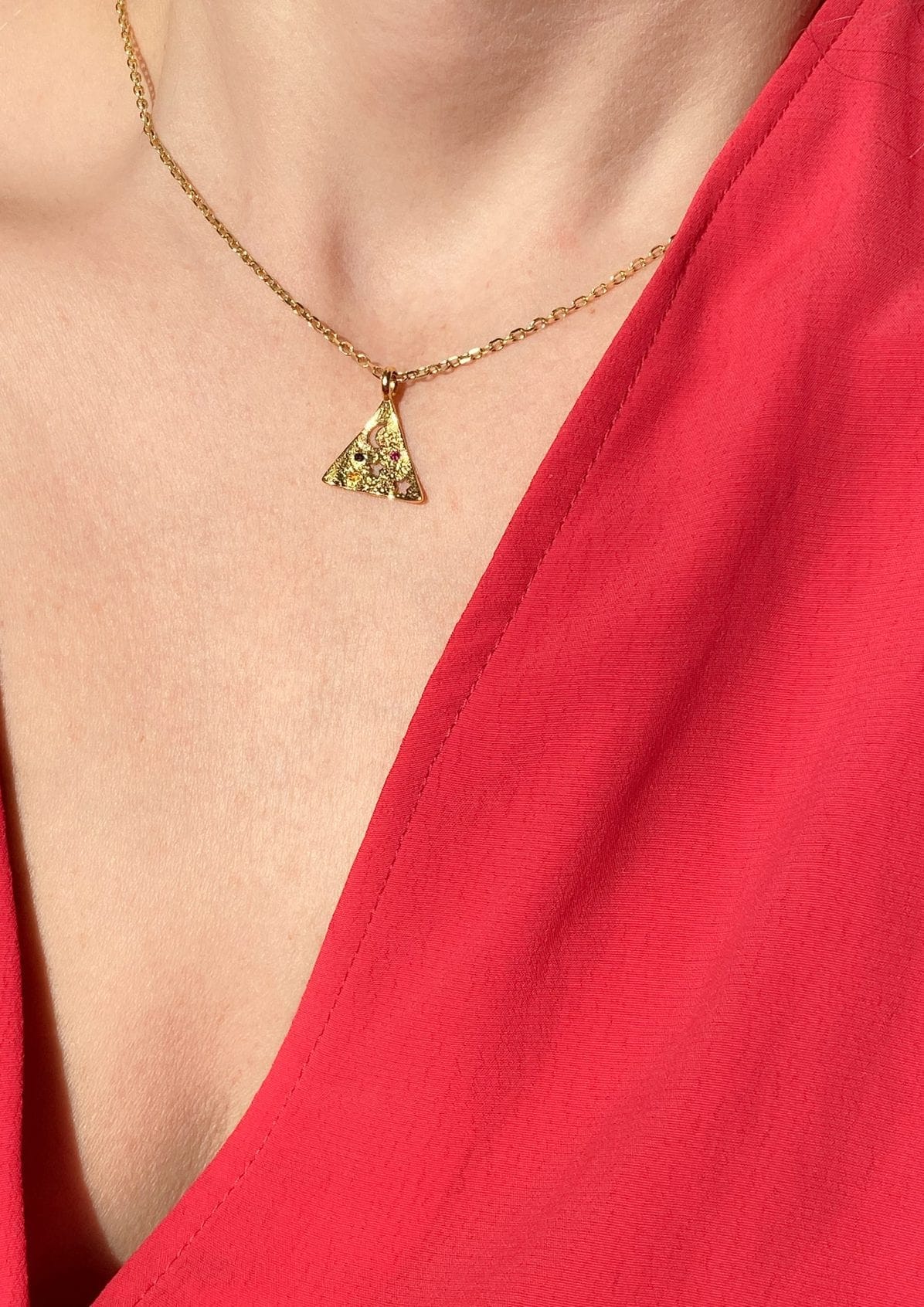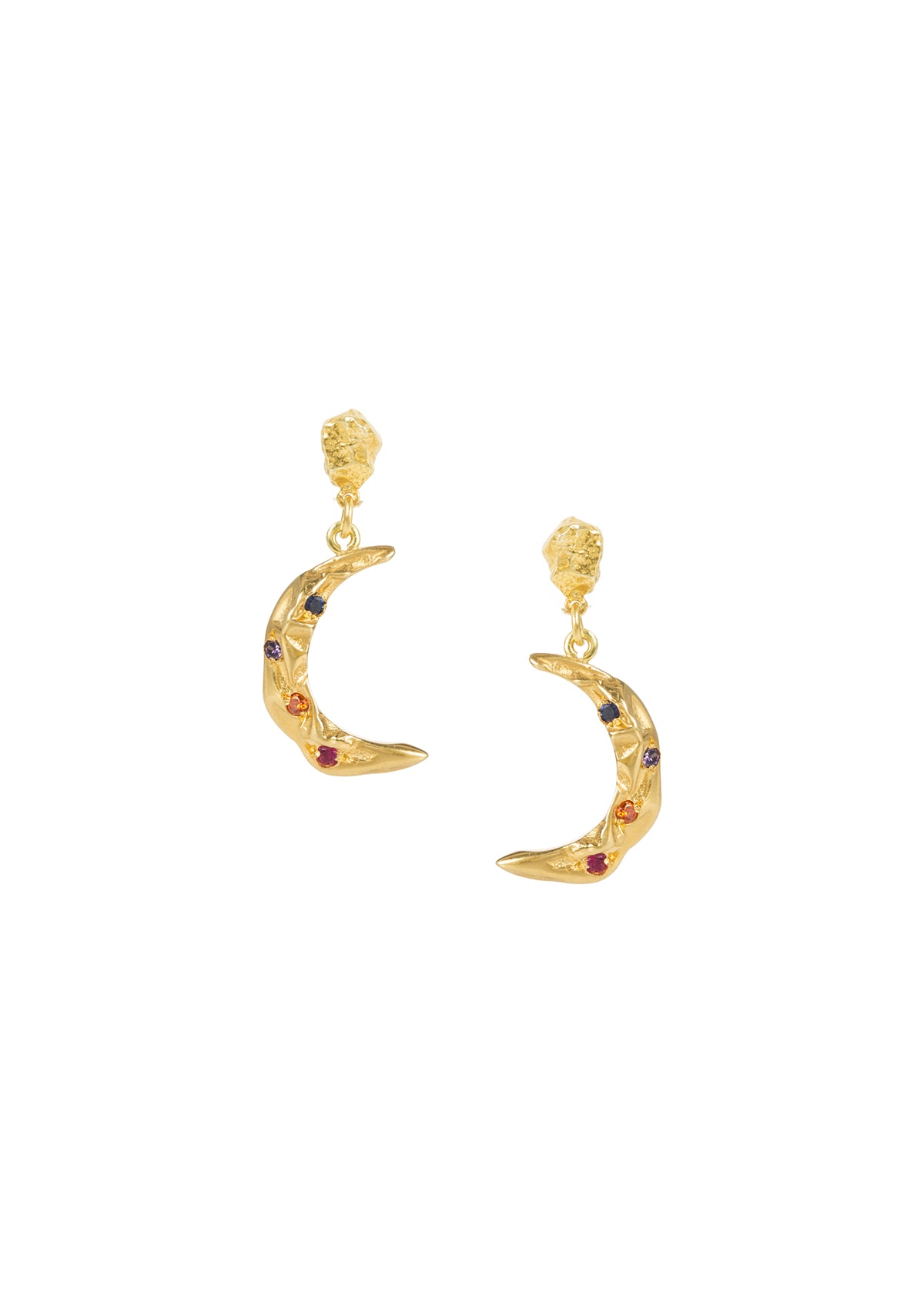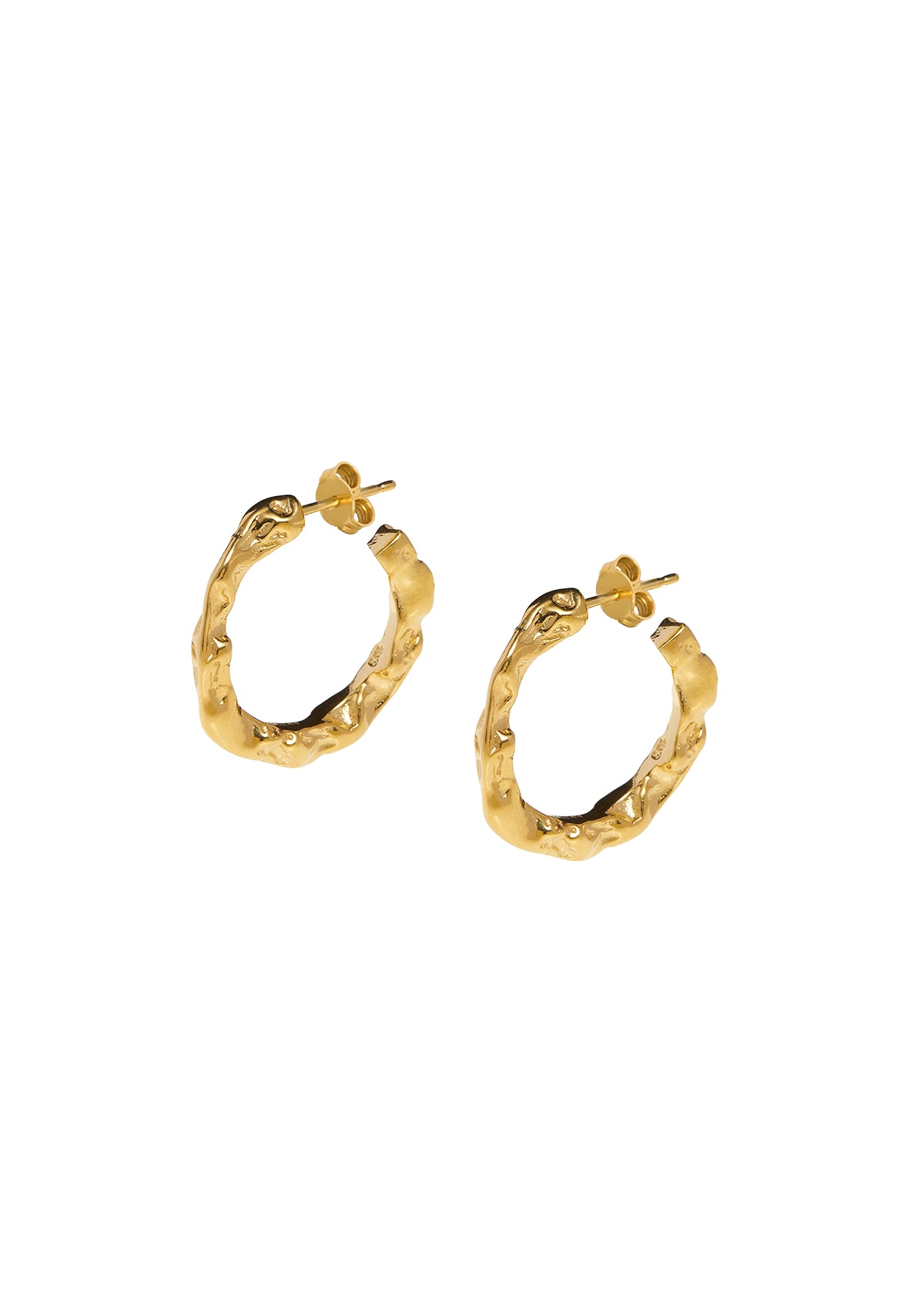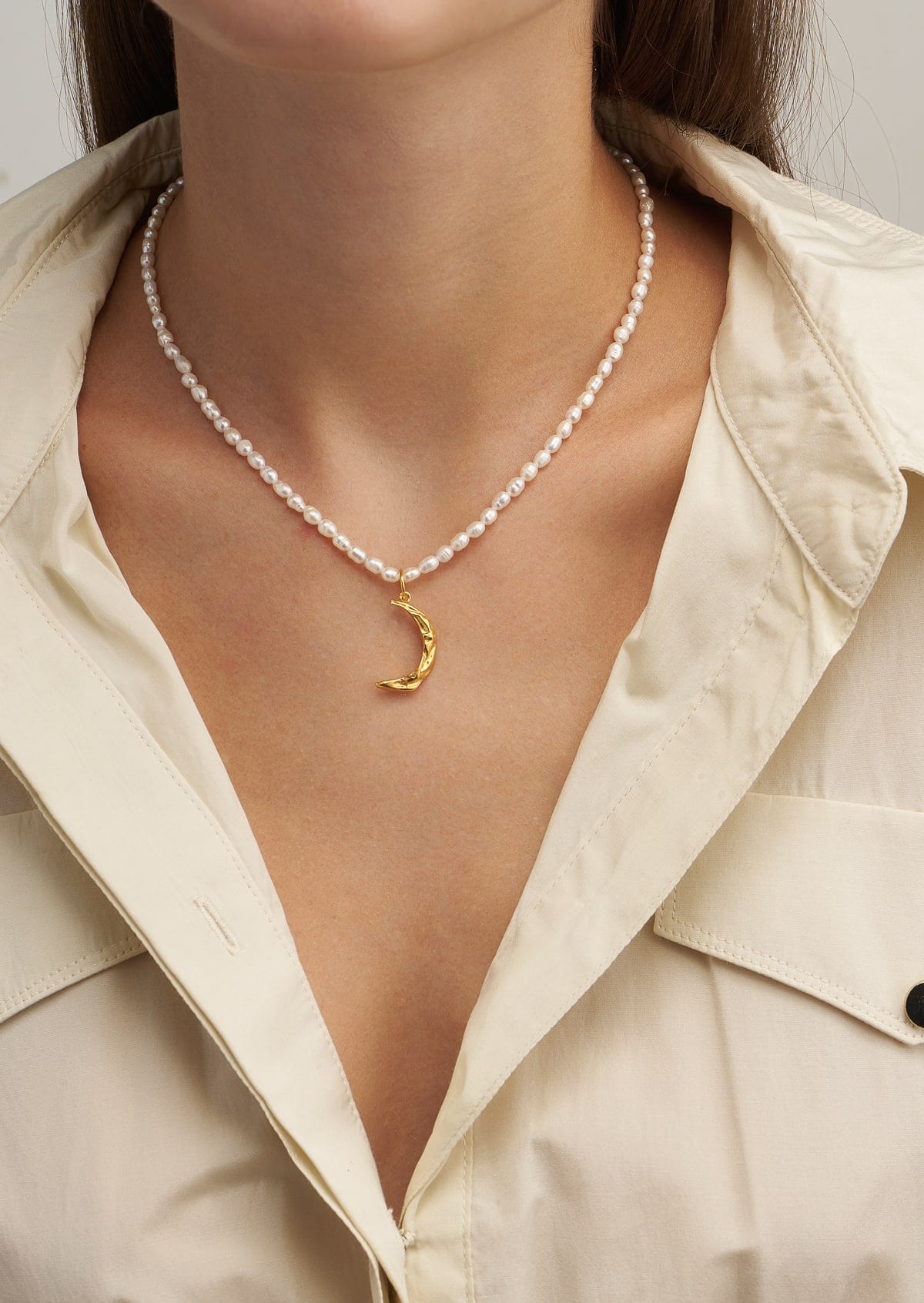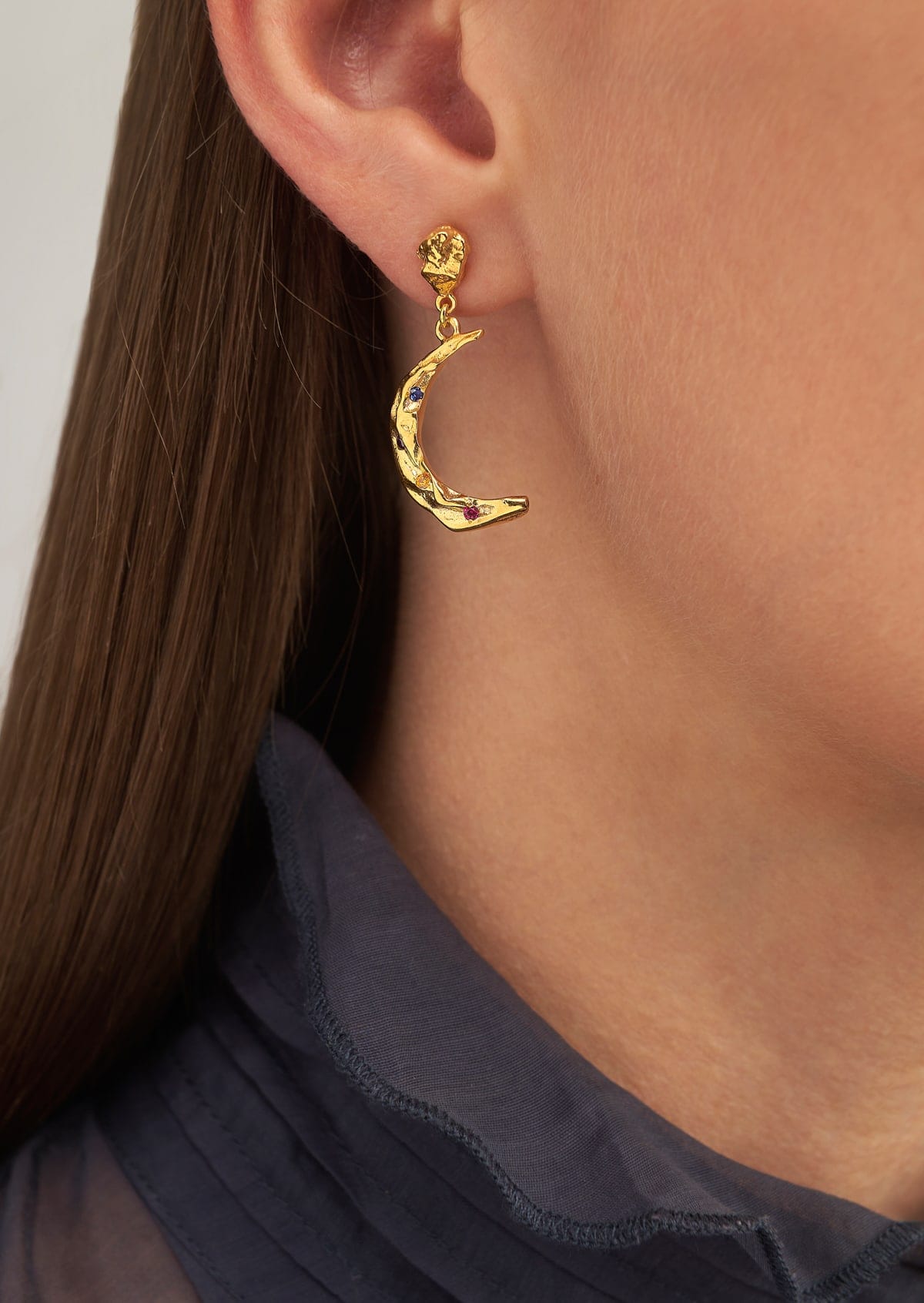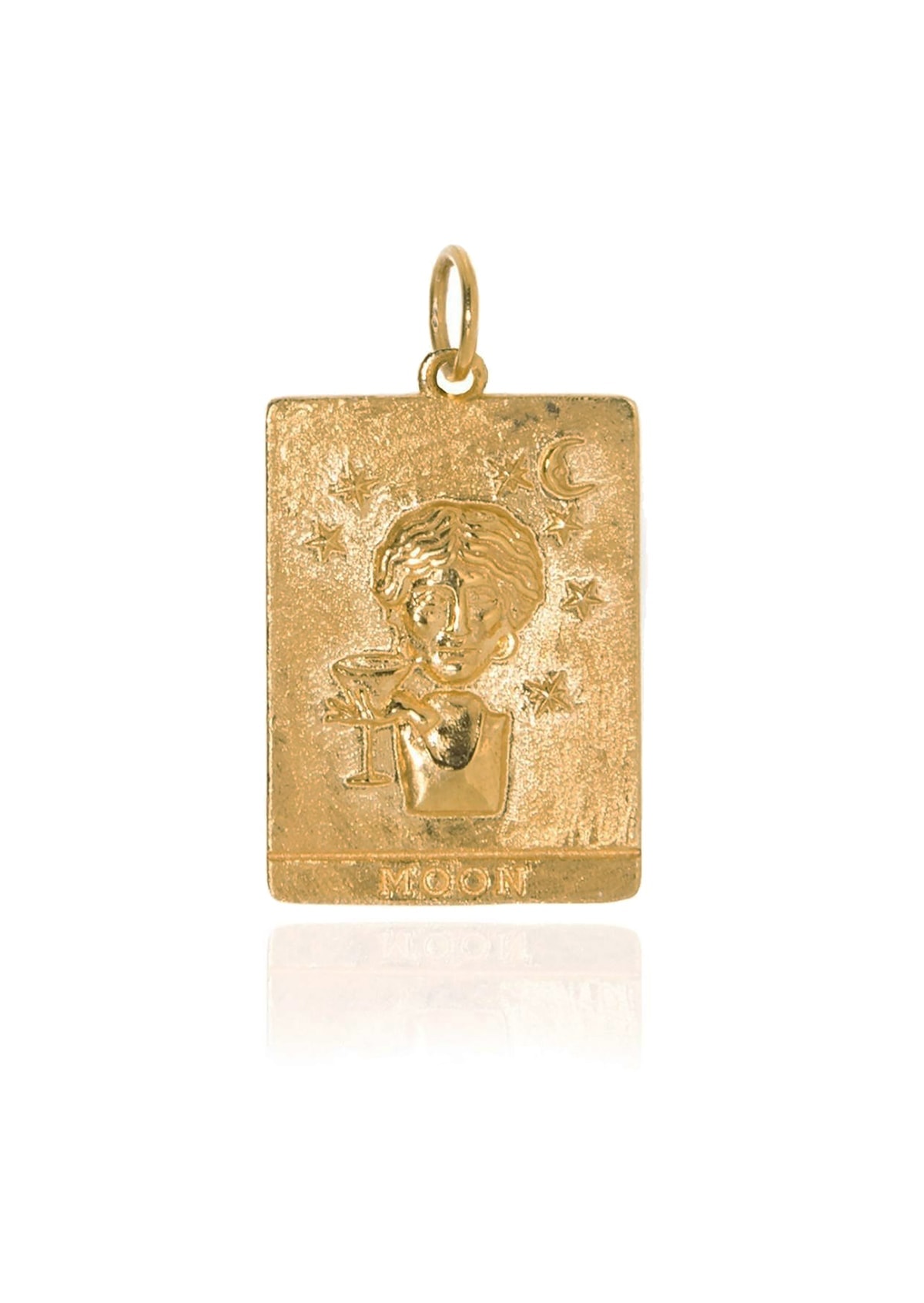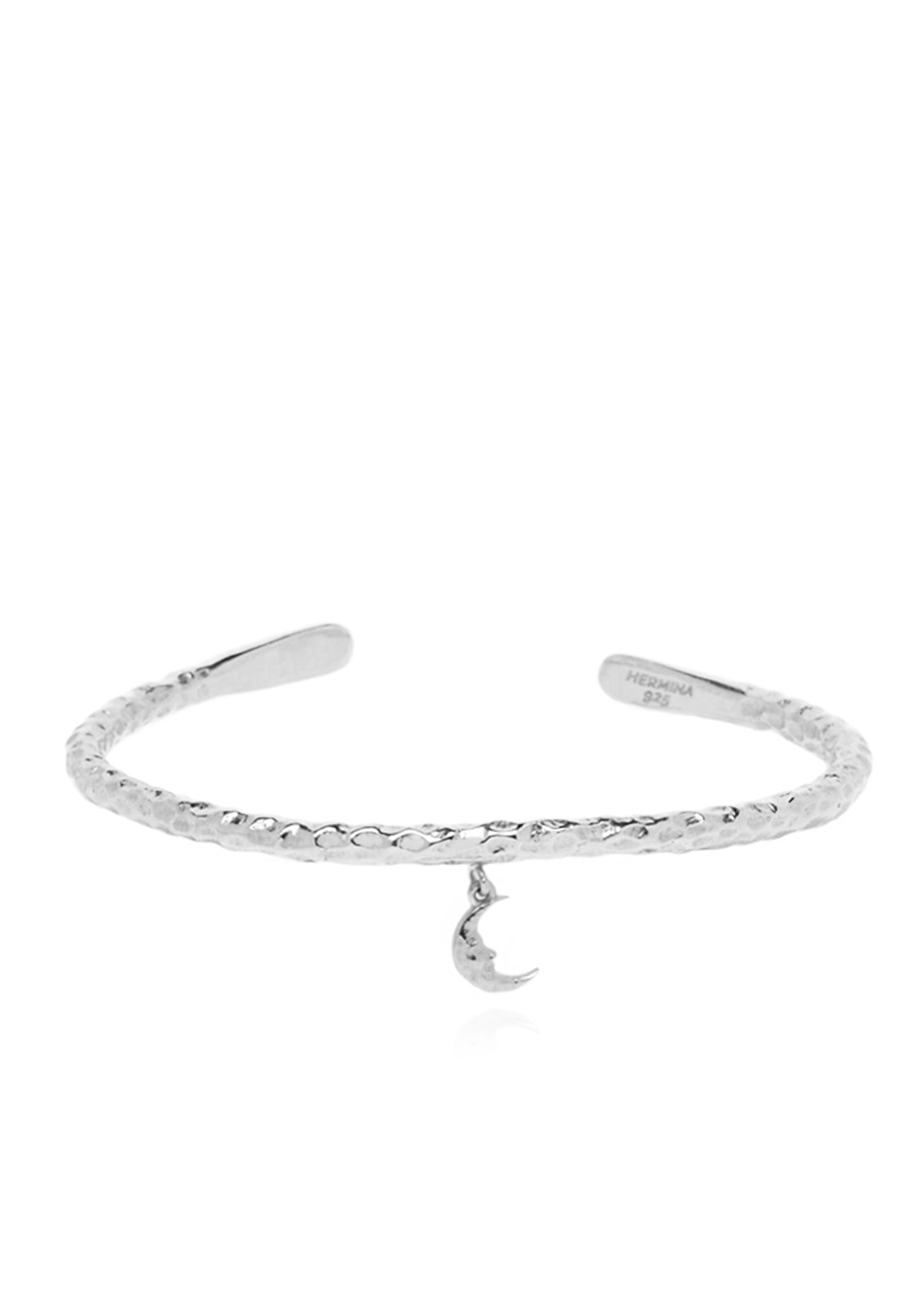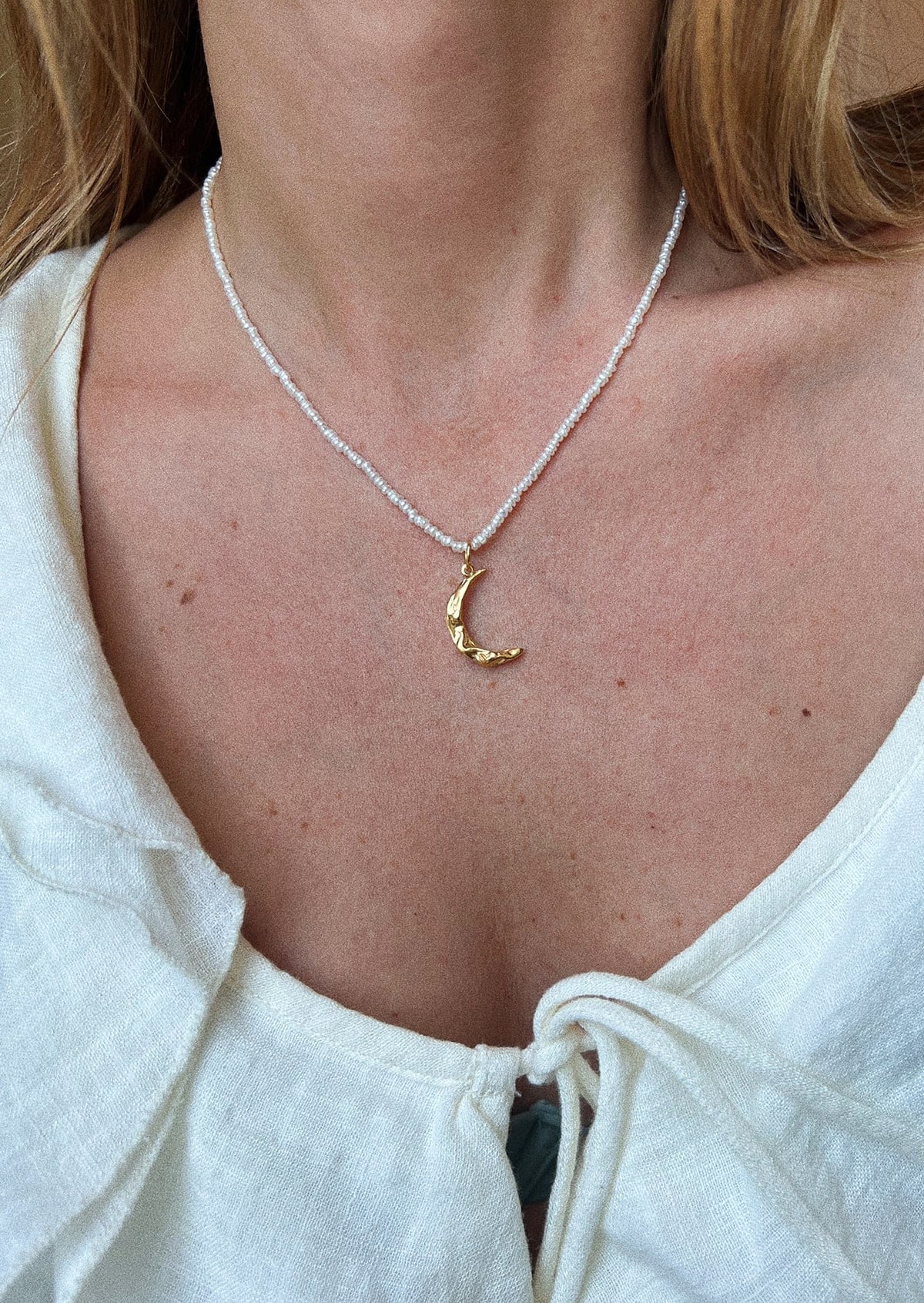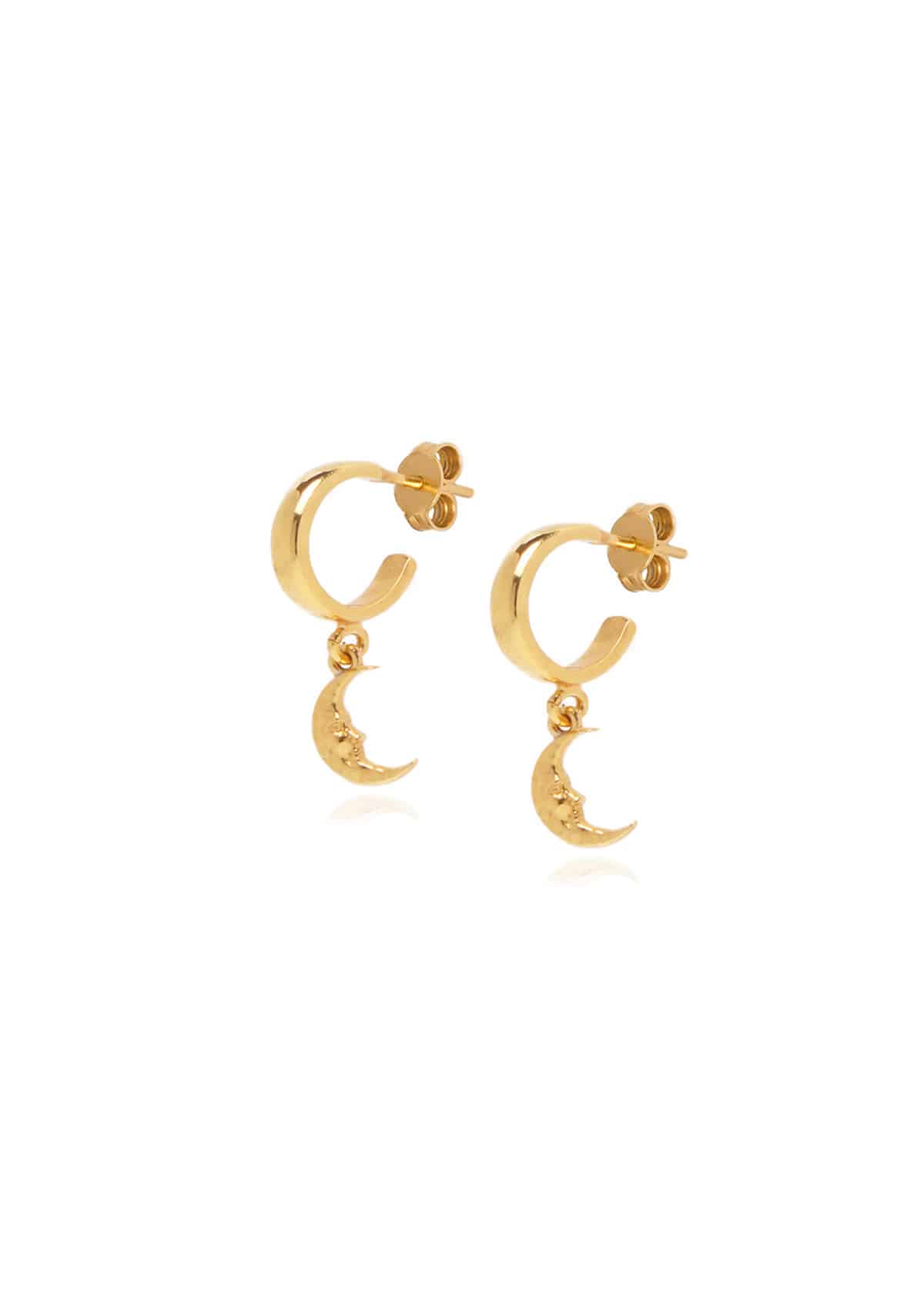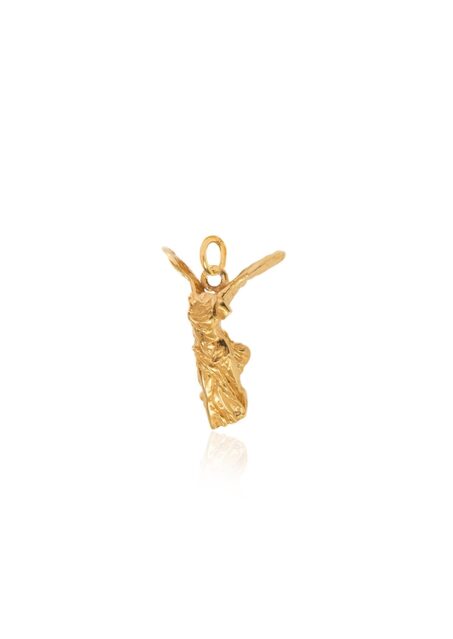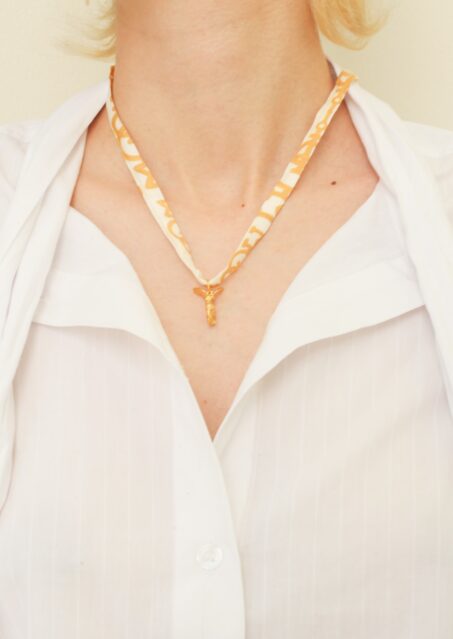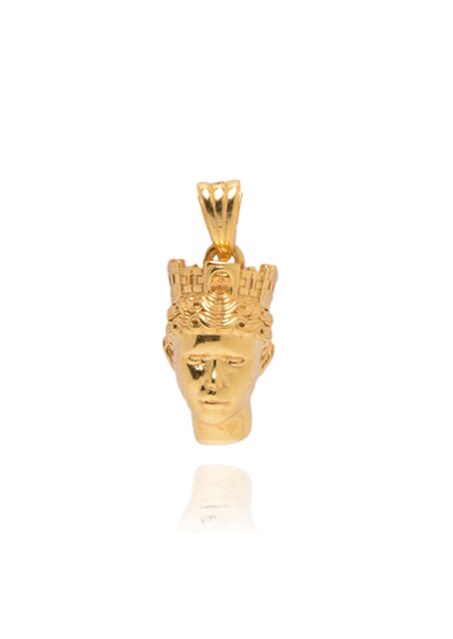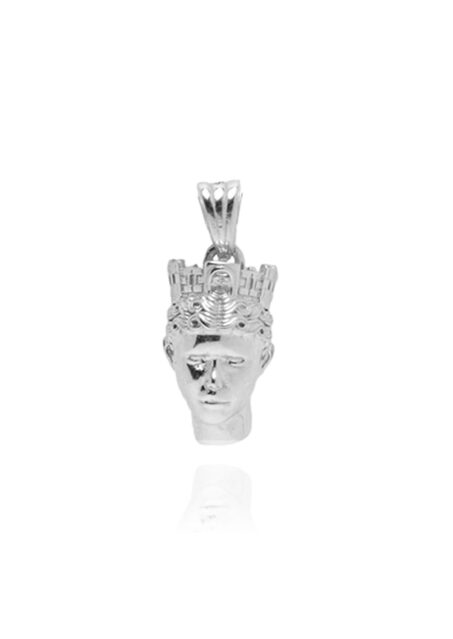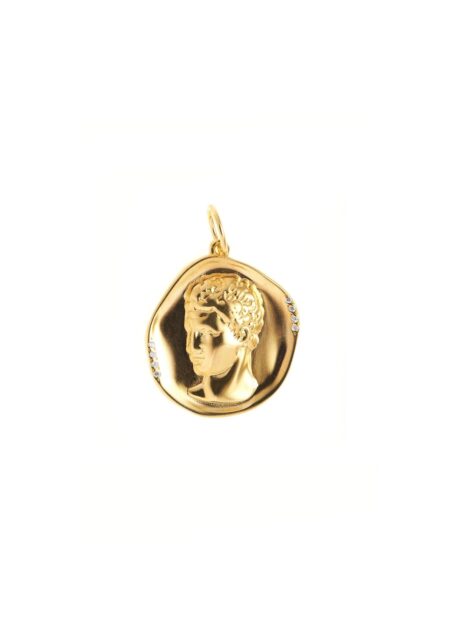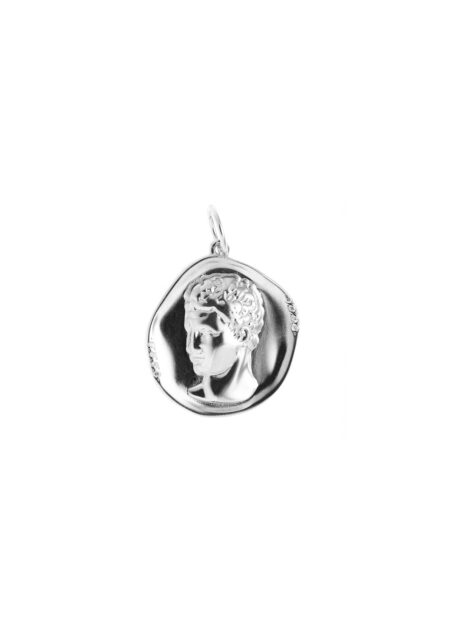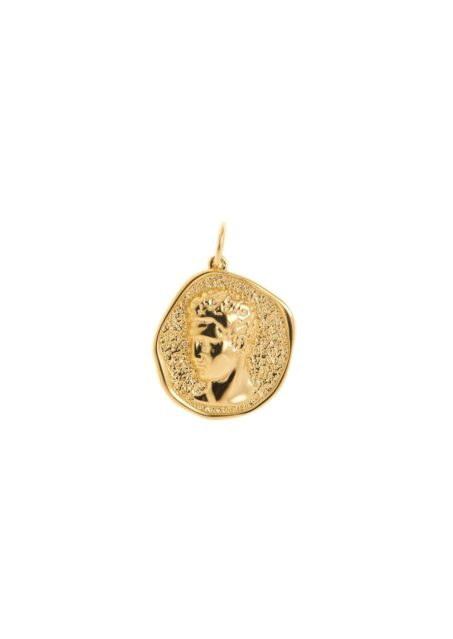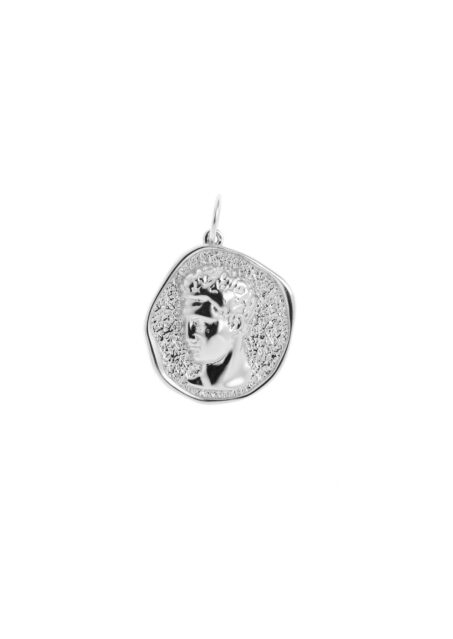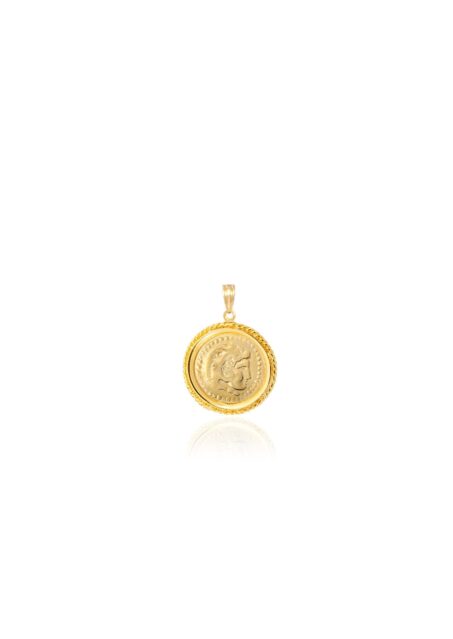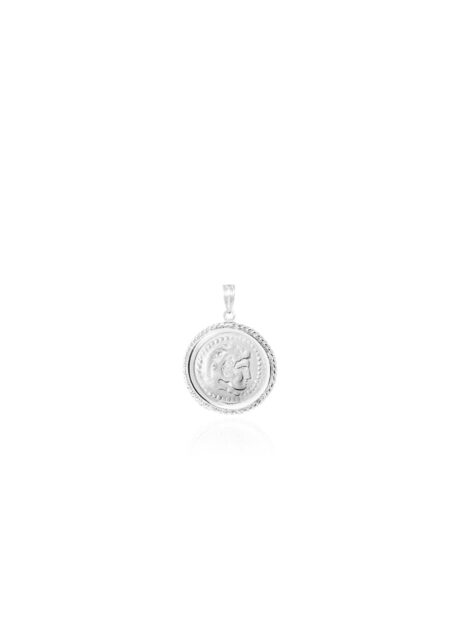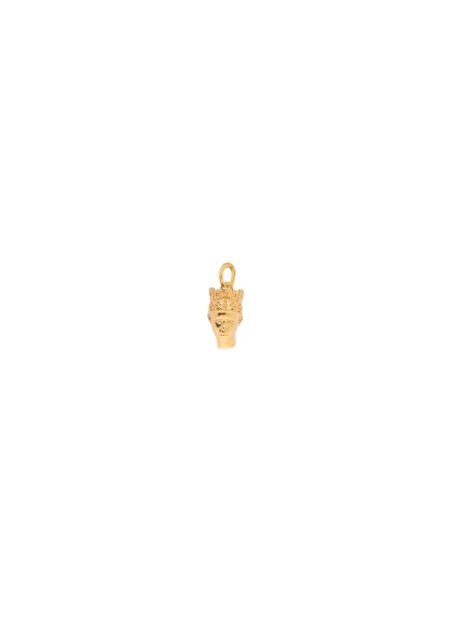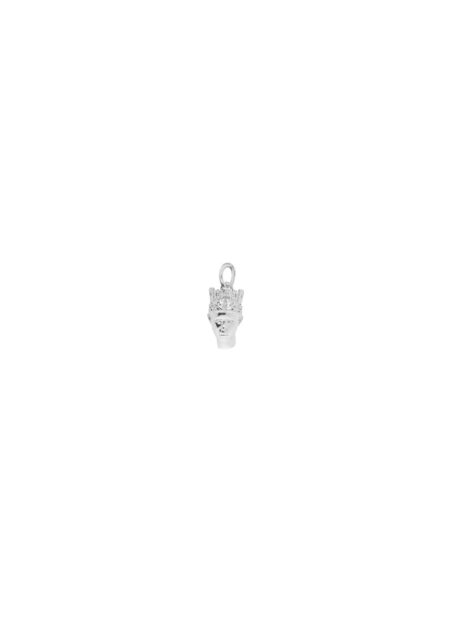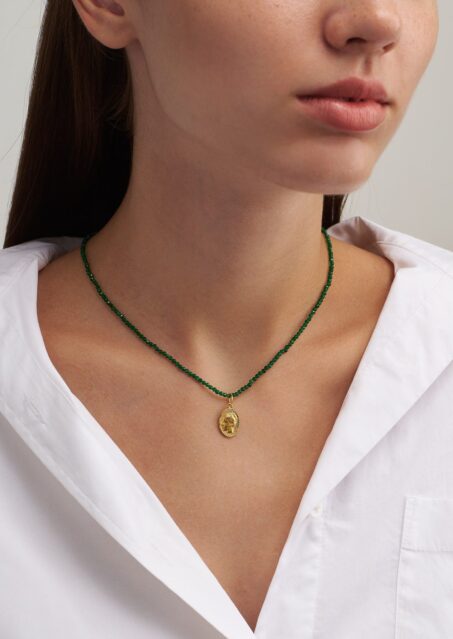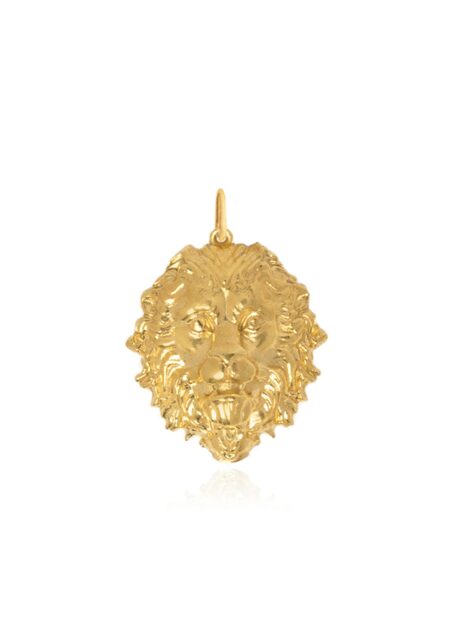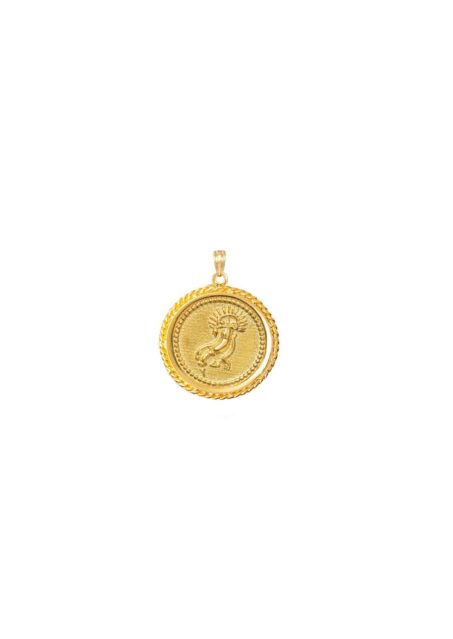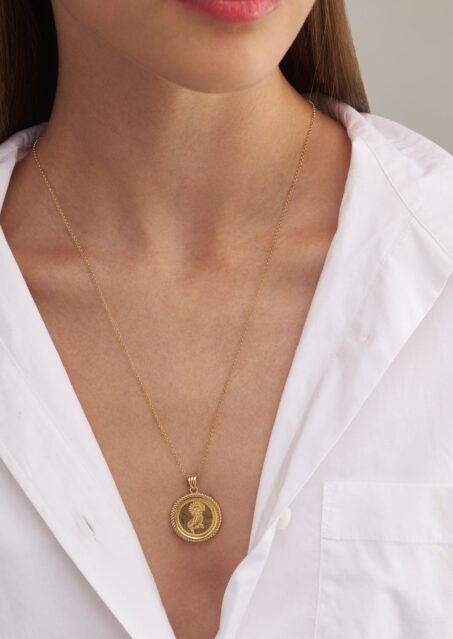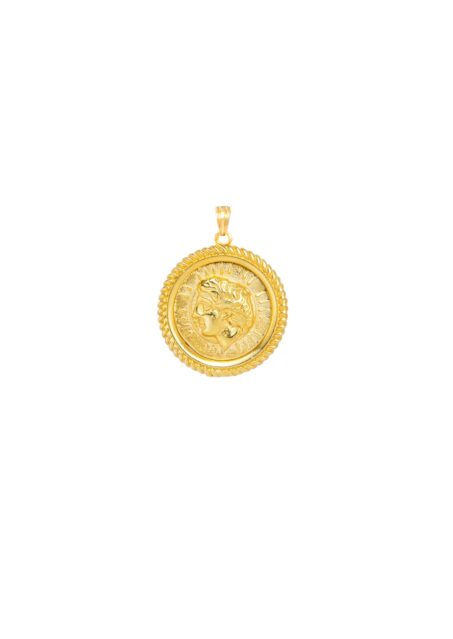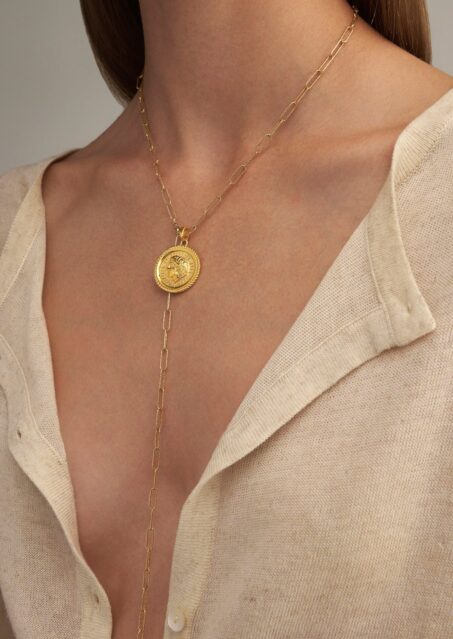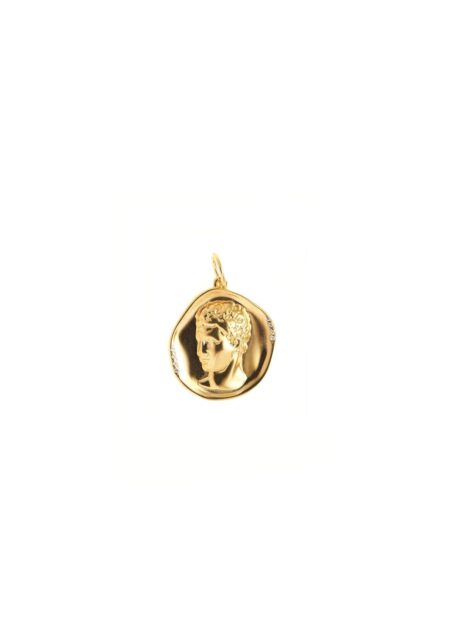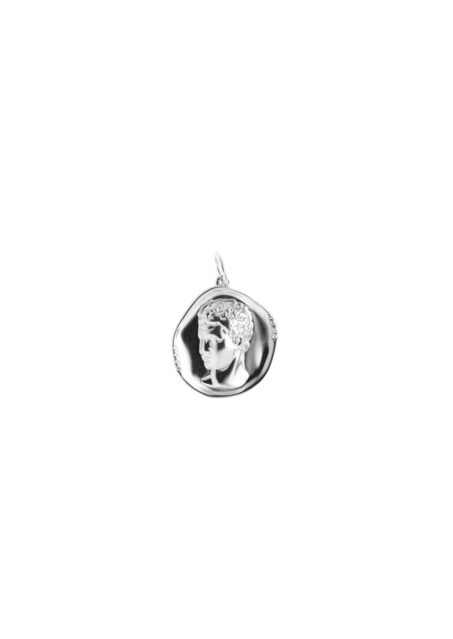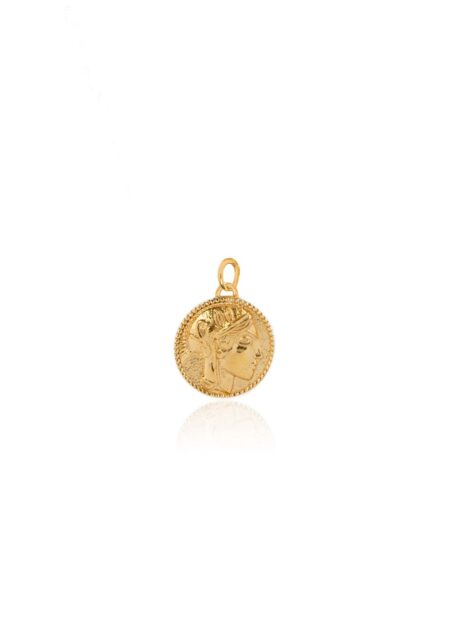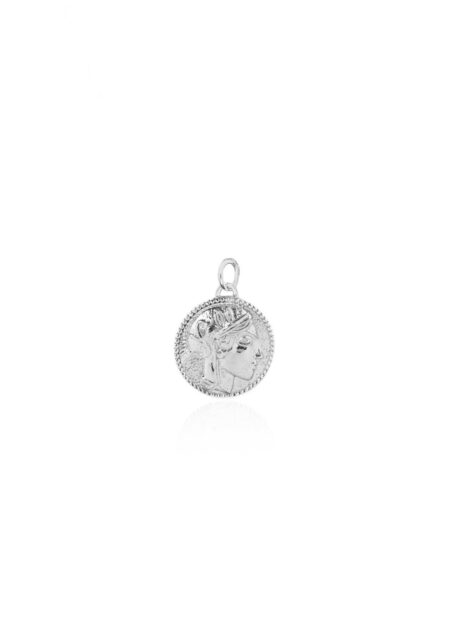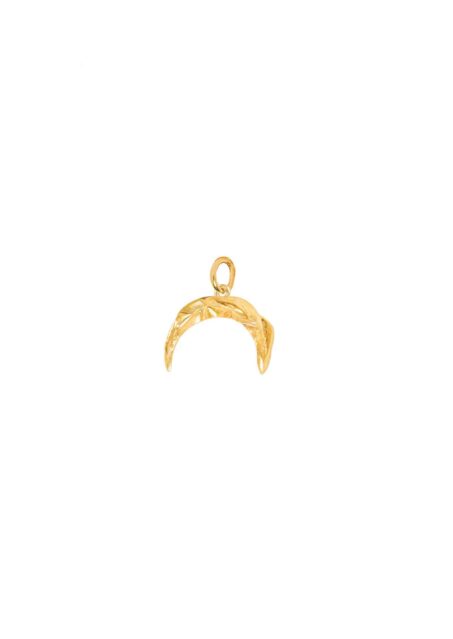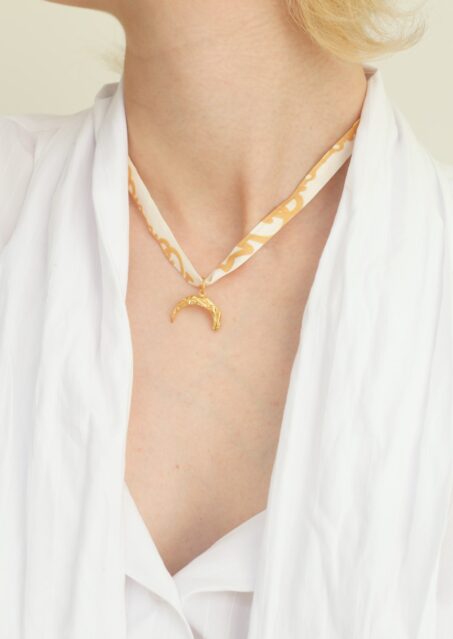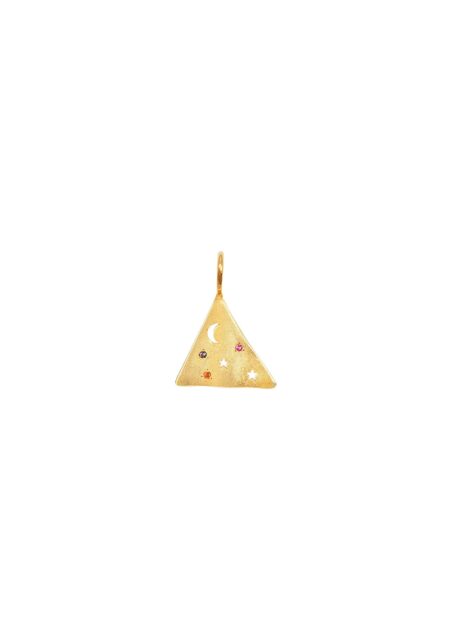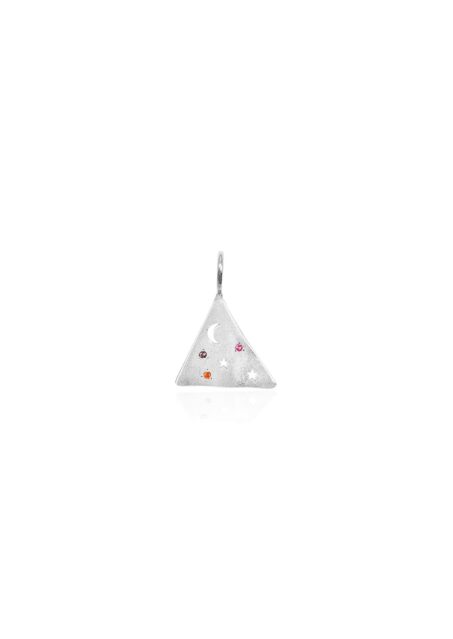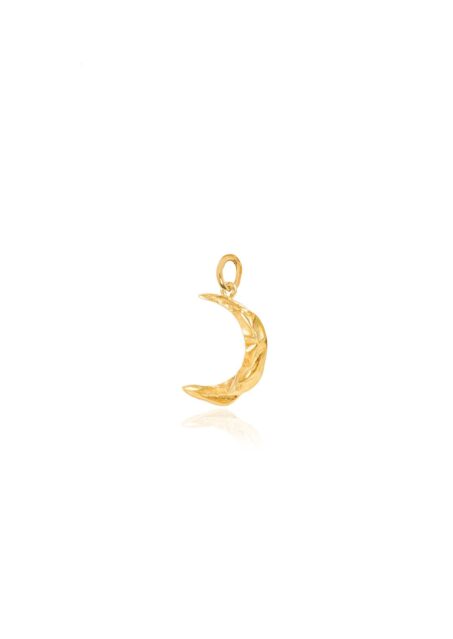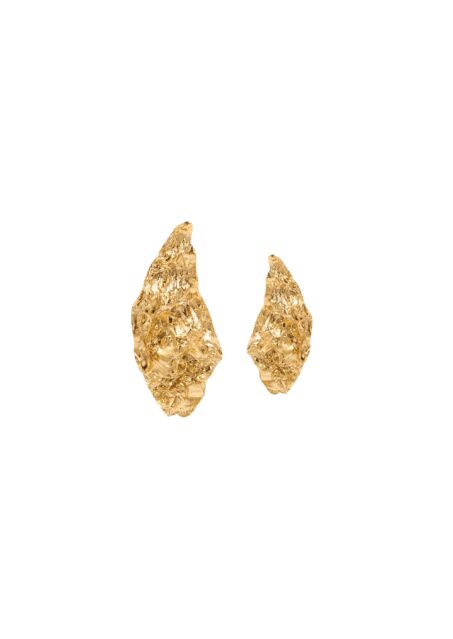Sometimes, symbols speak louder than words.
In our latest campaign, we decided to tell our story in a symbolic language, using powerful symbols that are close to our hearts.
Týche
Týche was the goddess of fortune, chance, providence, and fate in the Greek and Roman Pantheon and the protectress of cities and citizens, bearing plentiful gifts and all-around abundance.
Týche was conceived as the divinity guiding and conducting the affairs of the world, and in this respect, she was called one of the Moirai (Fates); with a ball, she represented the varying unsteadiness of fortune, unsteady and capable of rolling in any direction.
The inspiration behind our Týche charm came from a gorgeous edition of a book that explores various imagery inscribed on ancient coins.
Here is the original Týche as depicted in antiquity >
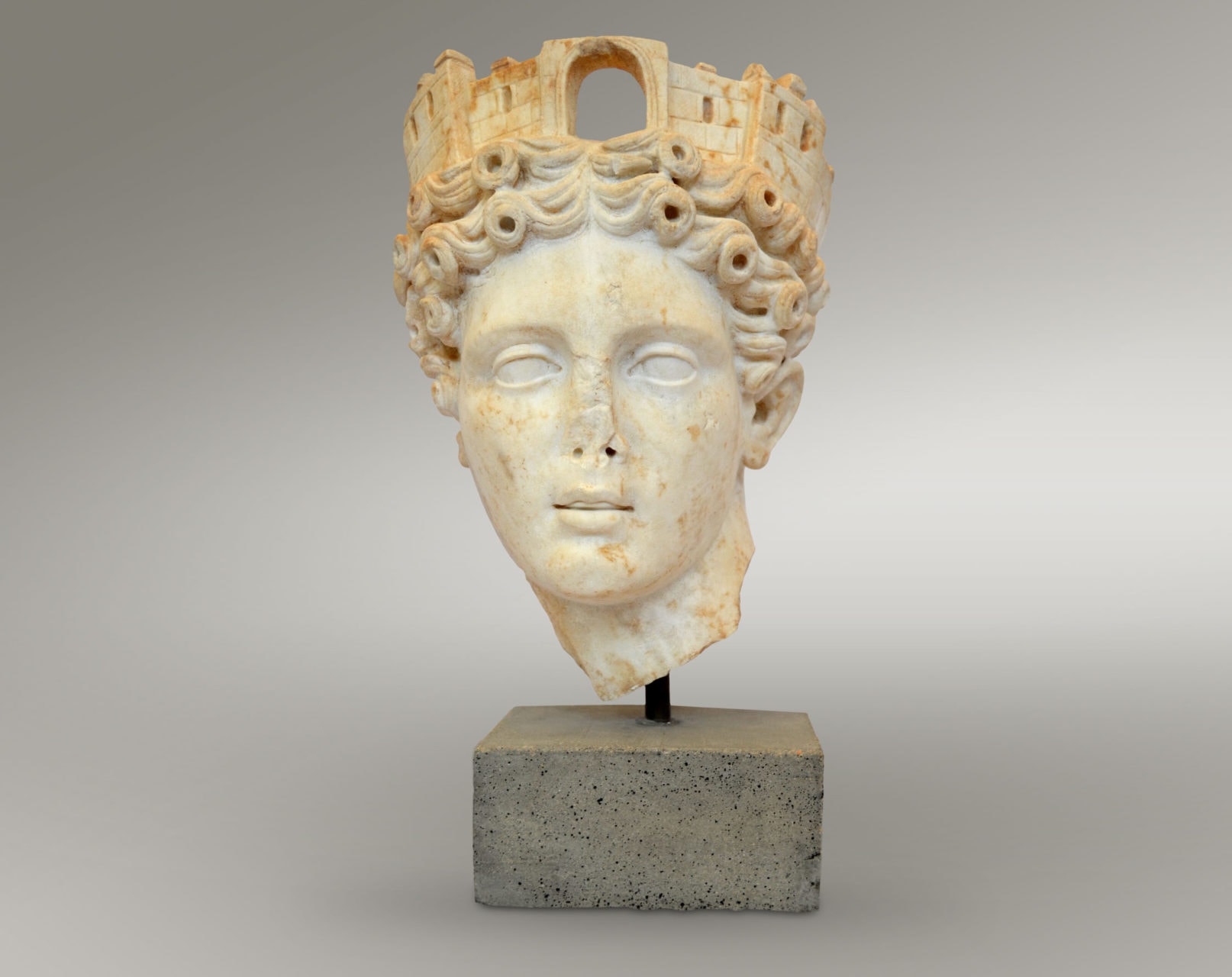
Hermis
Greek god Hermis was the great messenger to the gods, who could travel between realms on his winged sandals. A brilliant mind, trickster, traveler, and troublemaker, he ruled travel and trade, getting into all sorts of mischief and mystery as his stories unraveled.
From stealing his brother’s, Apollo’s heard of sacred sheep, and helping his half-brother Perseus to slay the Gorgon Medusa, he always put in use his sharp mind and cunning abilities.
The ancient Greeks credited Hermes with inventing some of the most remarkable and important tools in human civilization. These include writing and the alphabet (very useful for delivering messages), fire, dice and musical instruments. As a messenger to the gods, he was responsible for delivering messages to and from between the mortal and divine worlds.
Interesting fact: The female form of the name Hermis has lent its name to our brand, Hermina.
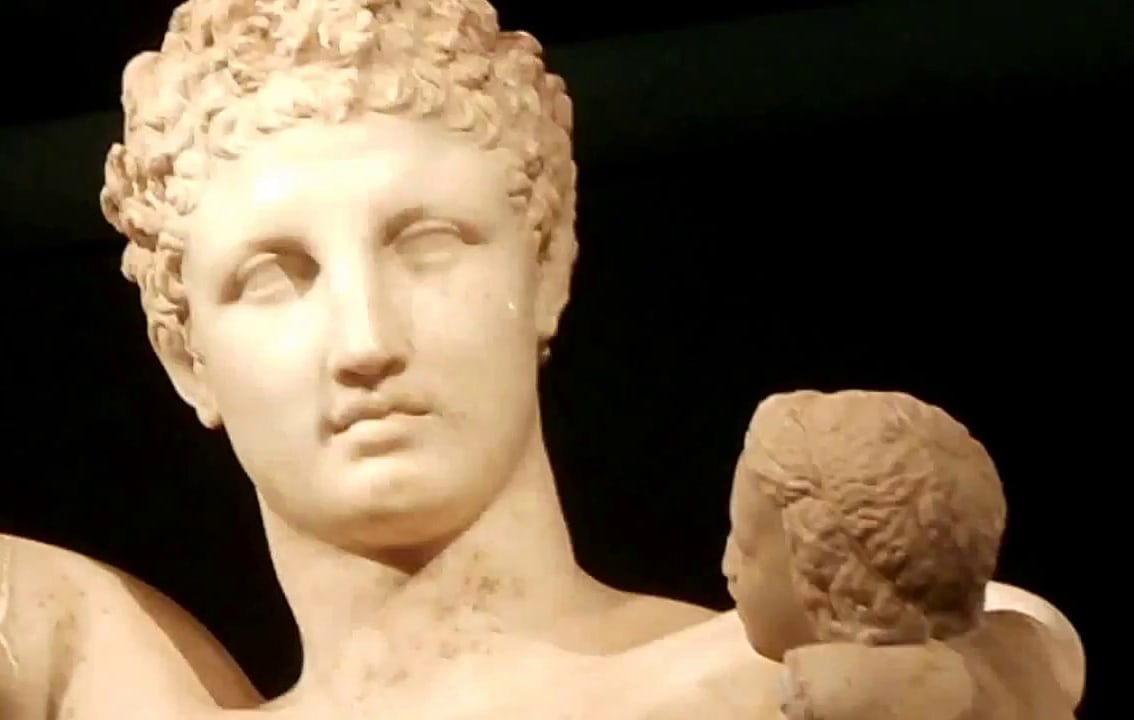
Kressida
‘’Valuable like gold’’ is the meaning of the Greek name Kressida.
The emblematic Hermina charm depicting a quirky-shaped eye is inspired from the Greek folk tradition about the ‘’evil eye’’. Simply put, the ‘’evil eye’’ is believed to be negative energy transmuted by a glare that has bad intensions. Any negative emotion can cause the evil eye (mati) curse, such as anger or even jealousy.
As it turns out, the concept of the evil eye dates back to Classical Antiquity, or the time period that encompassed the Classical Era in Ancient Greece. During this time, the Greek civilization was at its intellectual peak.
A common theme in literature at the time was that the eyes were a source of deadly rays that could bring harm to others. Plutarch, the Ancient Greek writer, is one of those who wrote about this concept. The belief in the evil eye tended to spread as Alexander the Great brought the Greek culture to the East.
To protect their energetic field, people have been wearing eye-shaped talismans, as they work as filters, absorbing negativity.
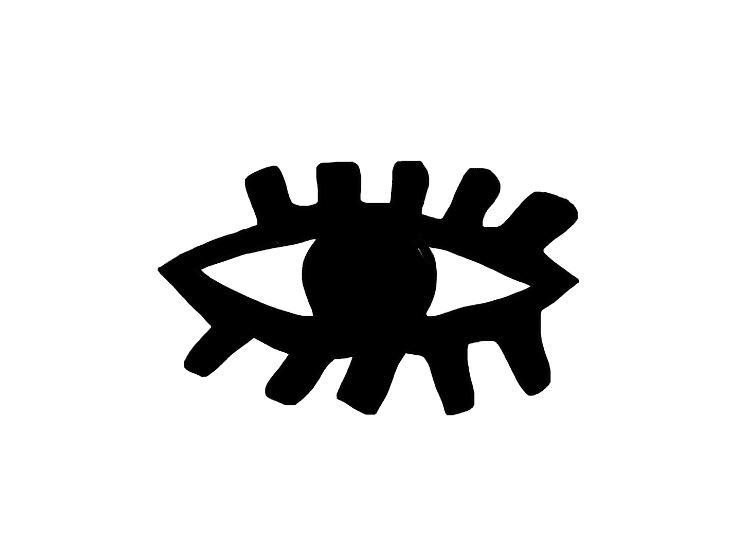
Pyramis
The Pyramis (Greek word for pyramid) has been a sacred symbol across various cultures since antiquity. Its triangular shape symbolizes the unity of mind, body, and spirit.
A symbol of enlightenment, self-awareness, and spiritual growth, the pyramis’ four sides represent the four elements—earth, air, fire, water. The bottom of the pyramis represents a solid, earthy foundation, whereas the pointed top represents being able to reach into higher realms of consciousness, a balance between the material and spiritual aspects of life.
It is believed that the shape of a pyramid can amplify and focus spiritual energy, possessing powerful energy-clearing properties.
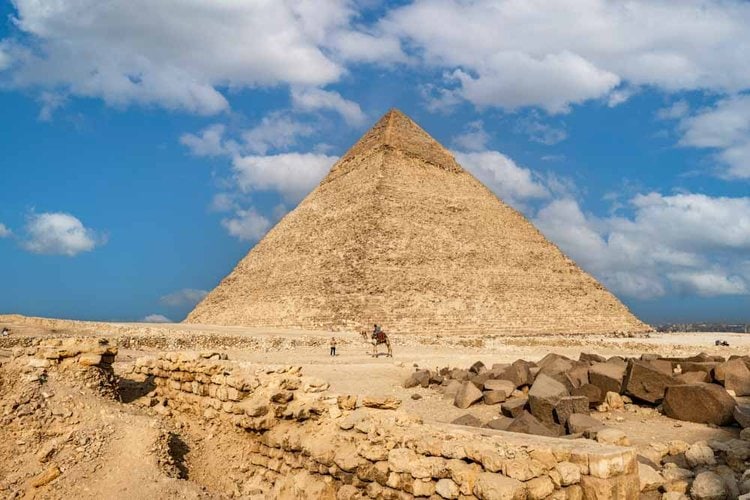
Moon
The moon is one of the most powerful symbols of all time. Honored since antiquity, the cycles of the moon served as a reference point for seasons changing, agricultural work and spiritual celebrations.
The moon rules our emotional world and our intuition, highlighting the female and receptive part of the psyche.
A universal symbol, both feminine and lyrical, has consistently been a cornerstone of our collection, manifesting in diverse and captivating forms.
